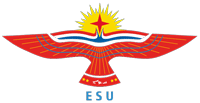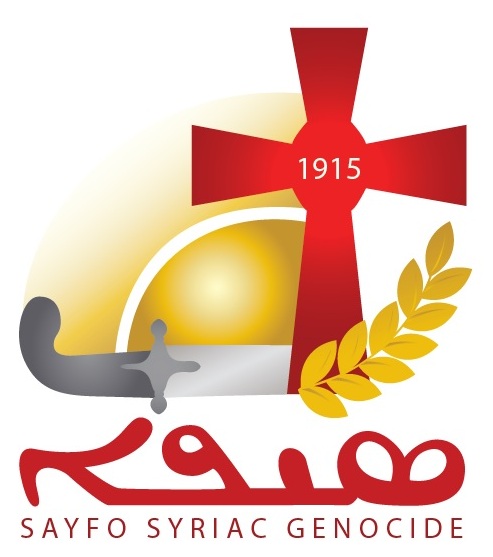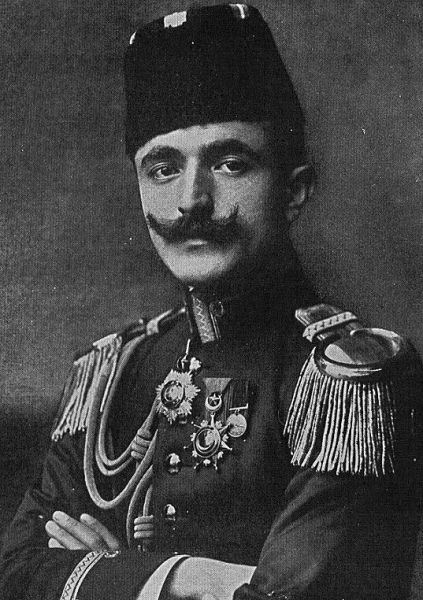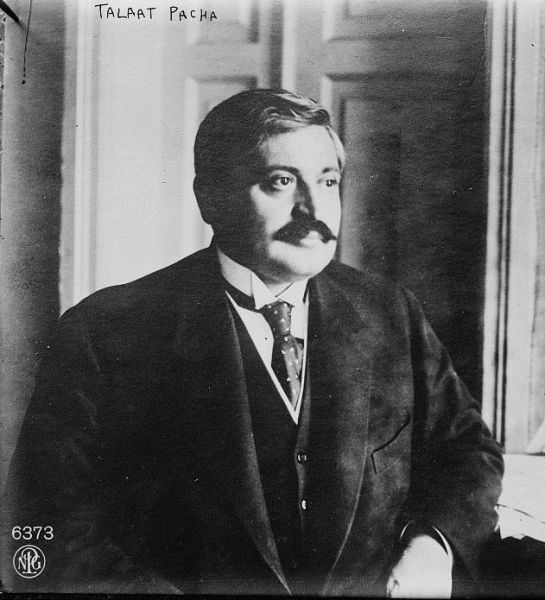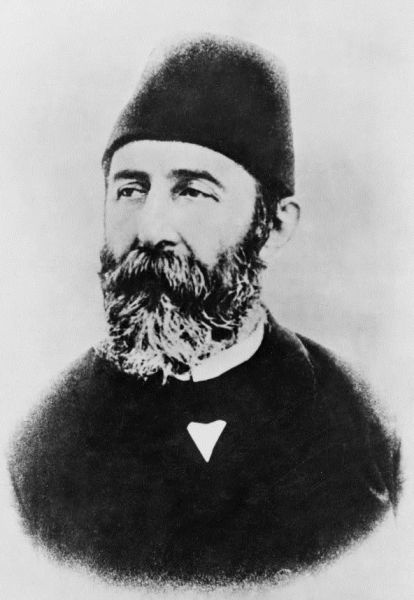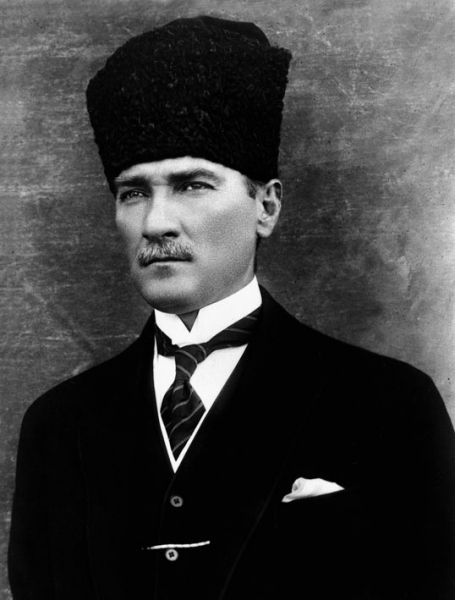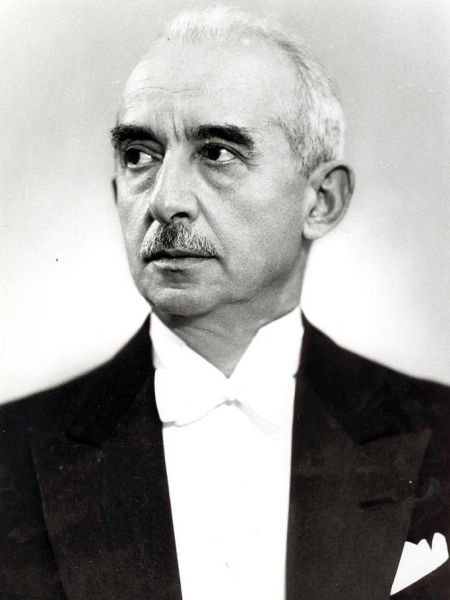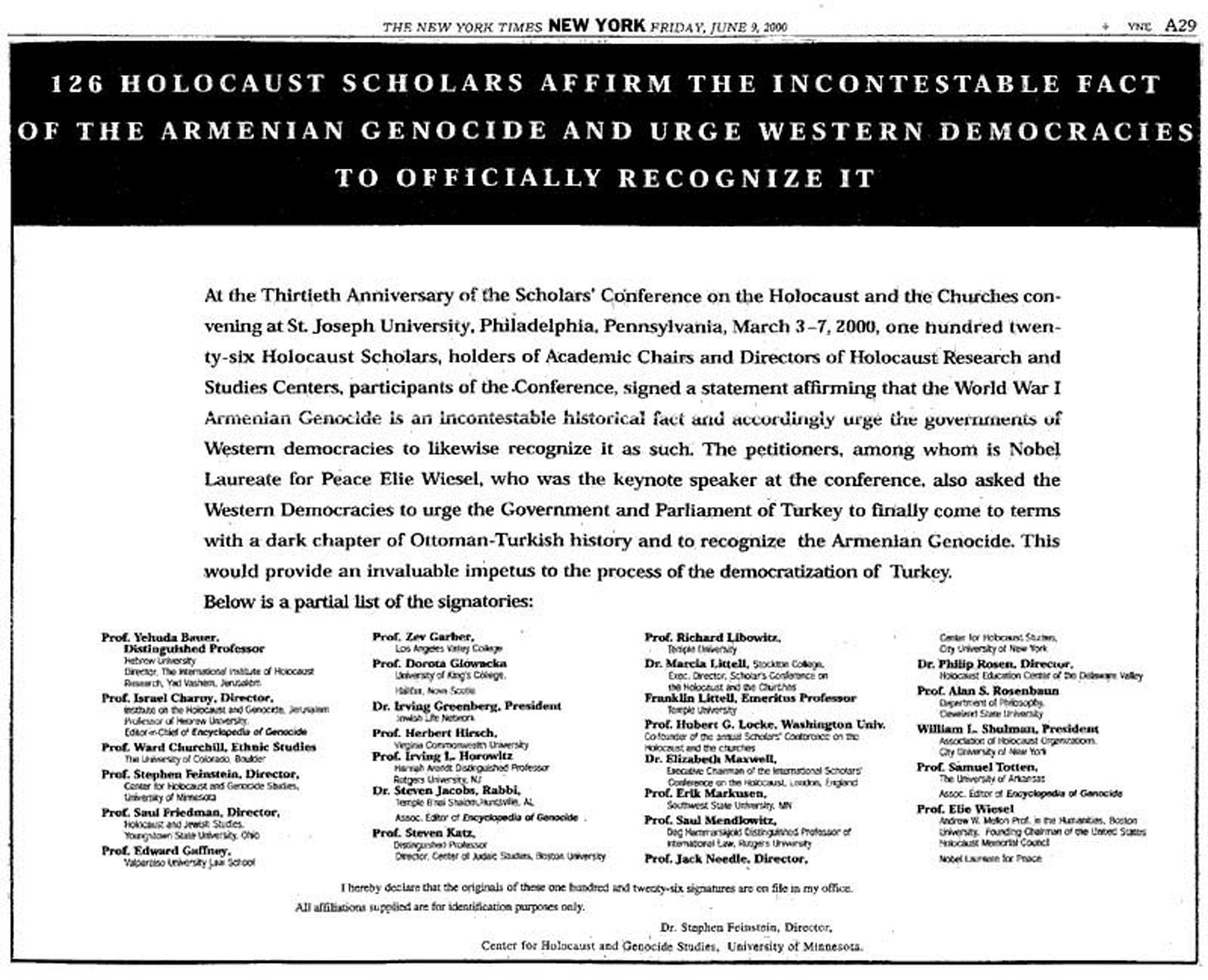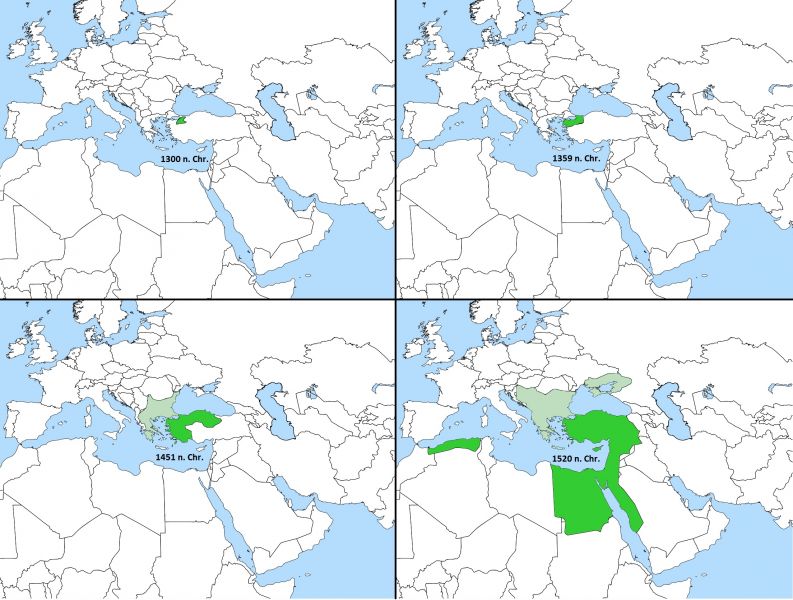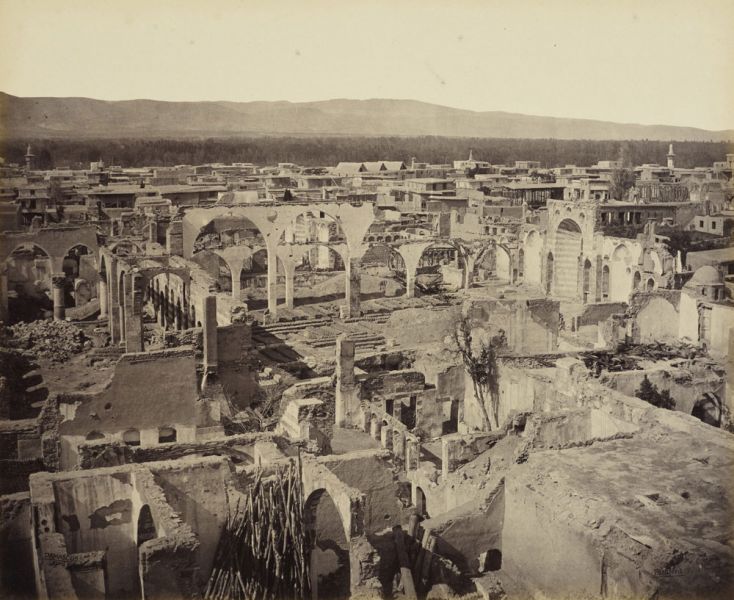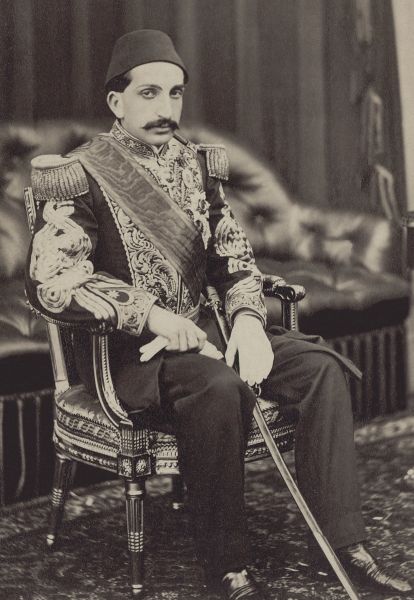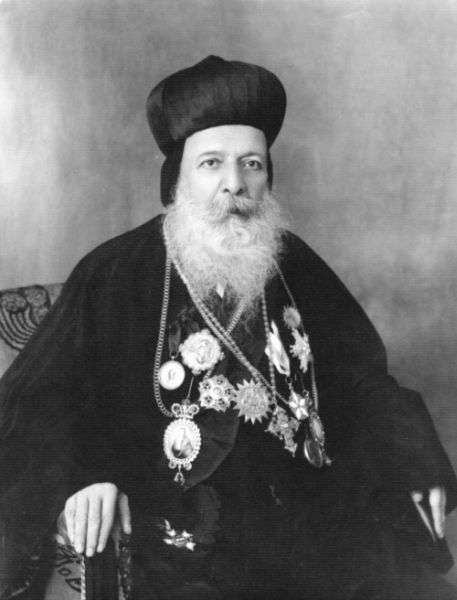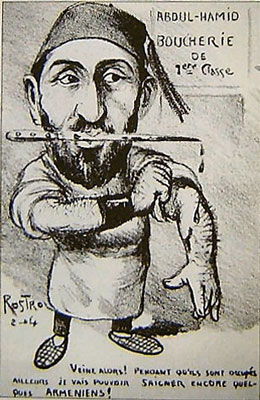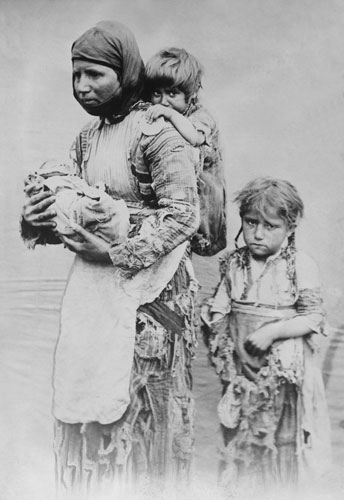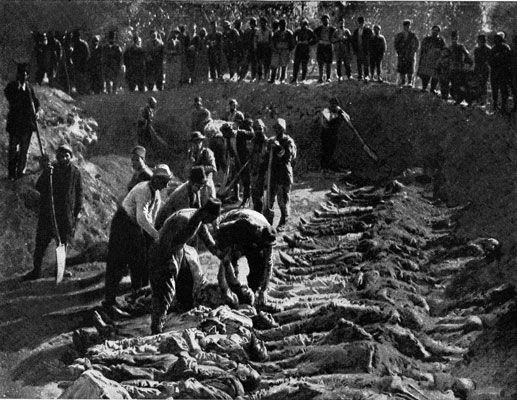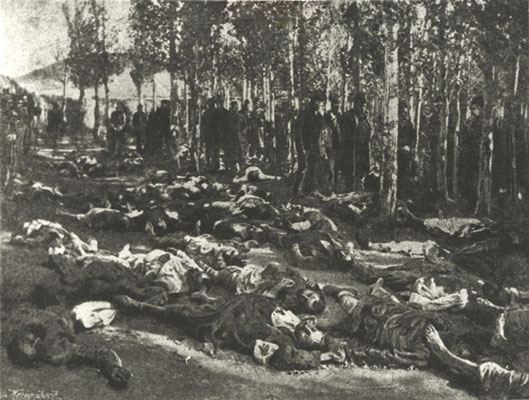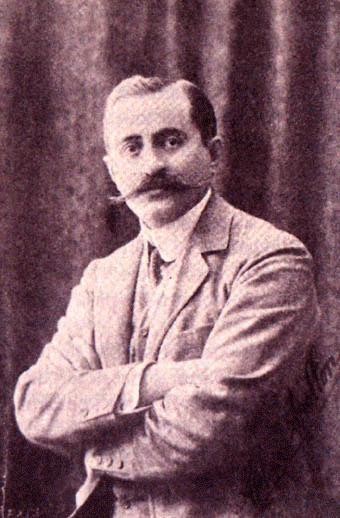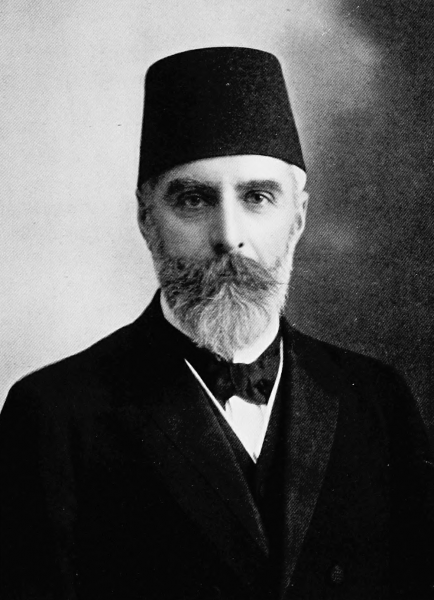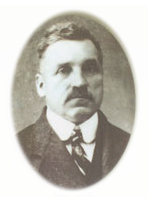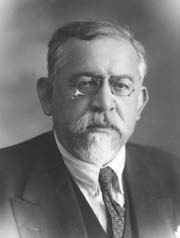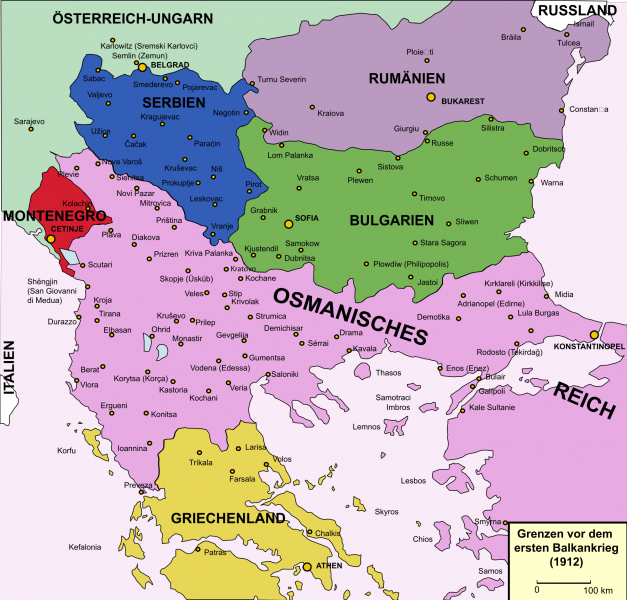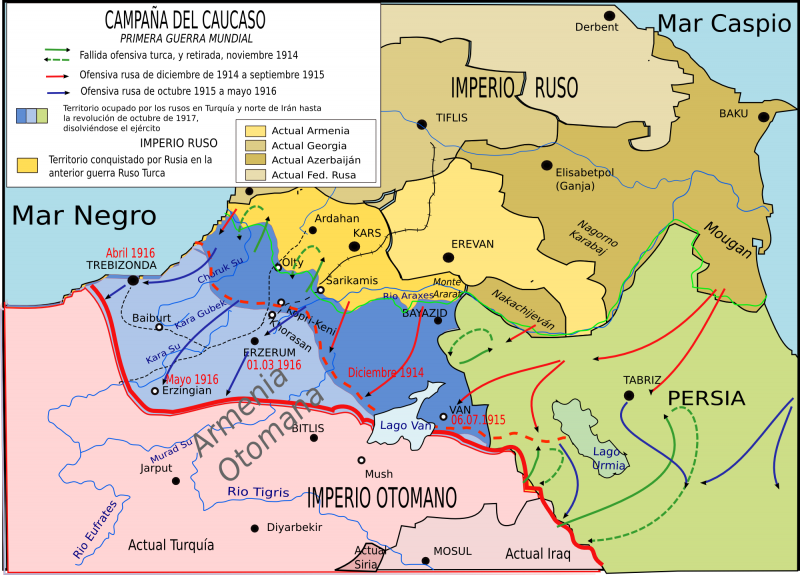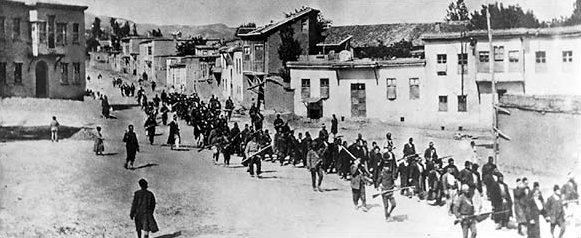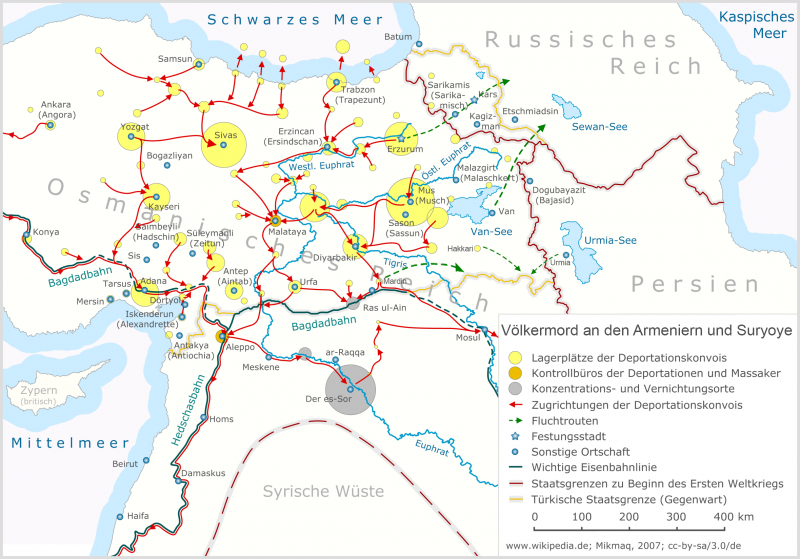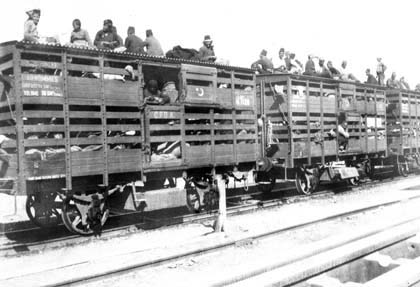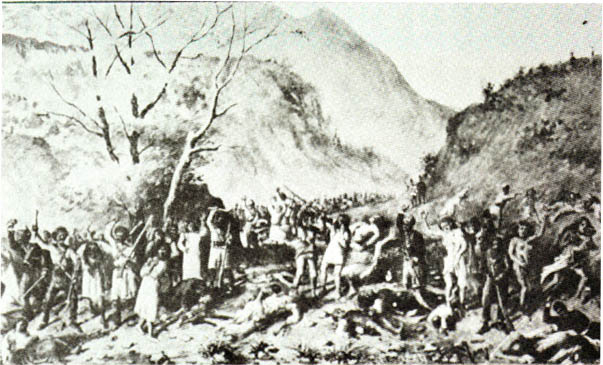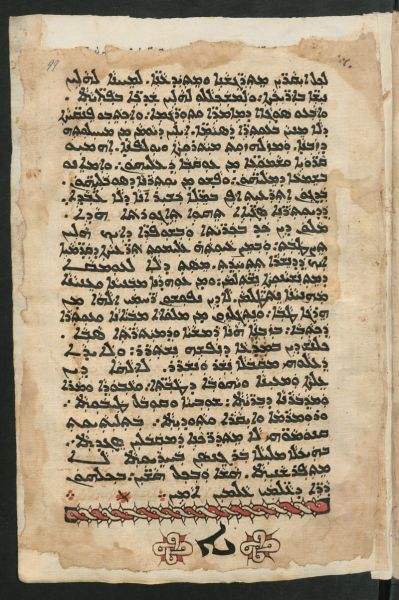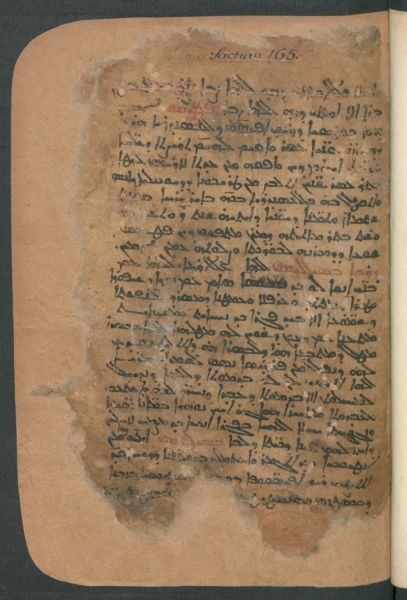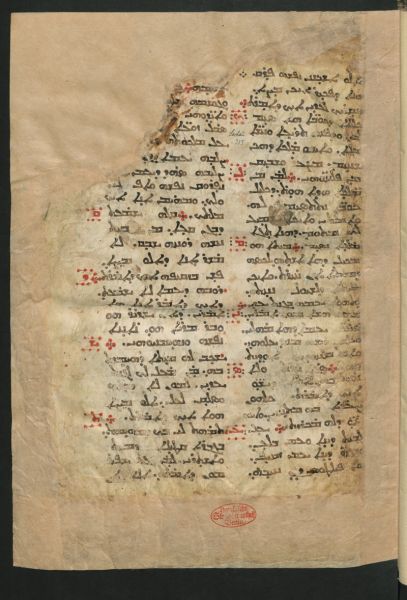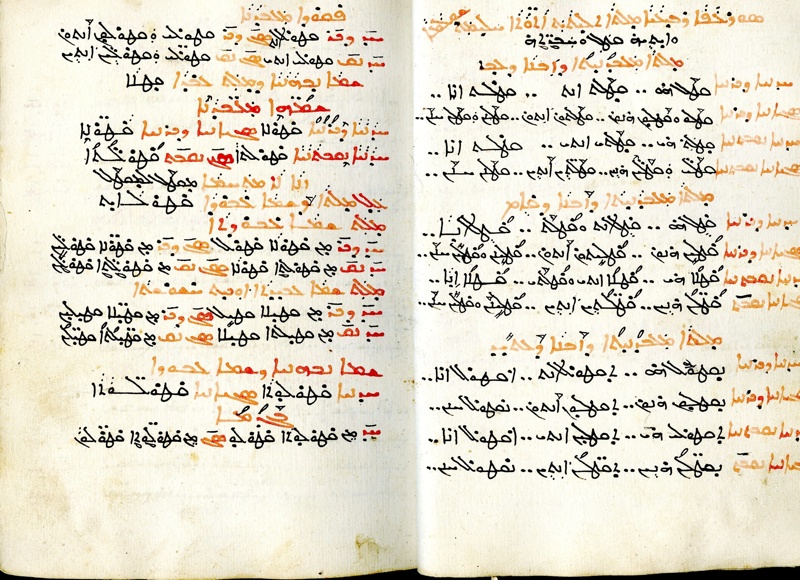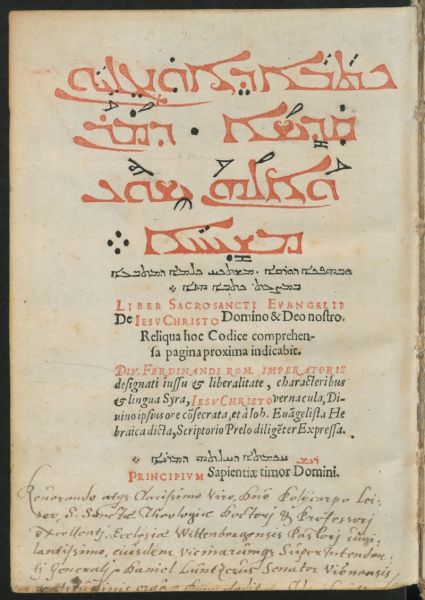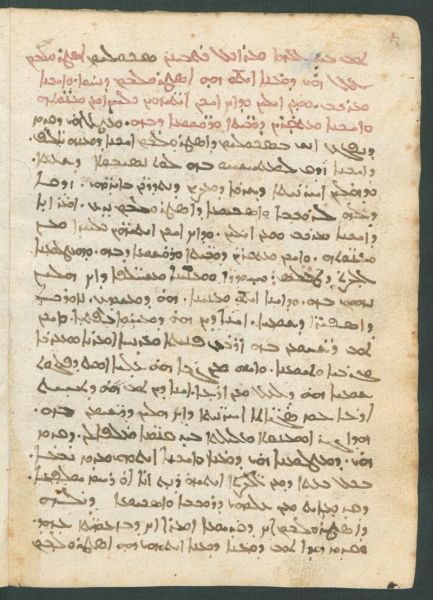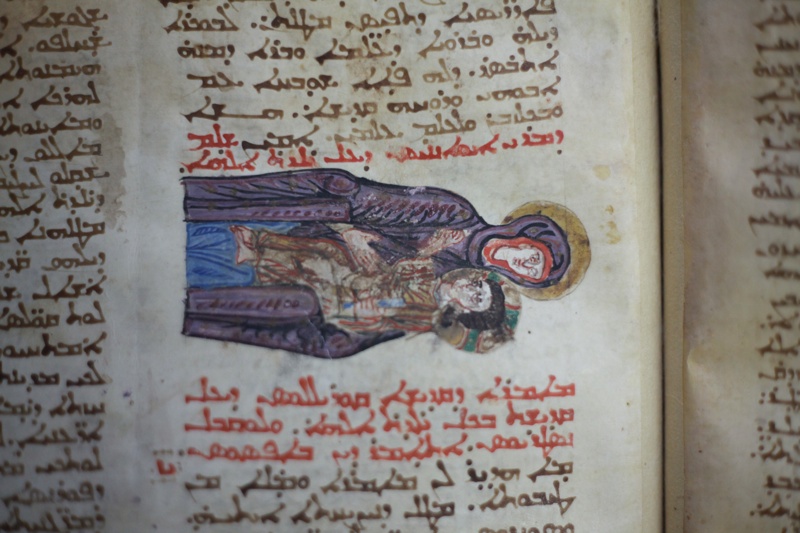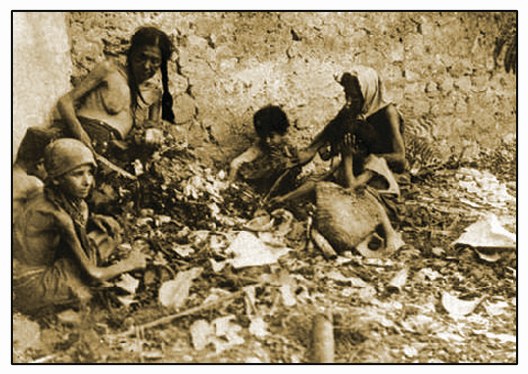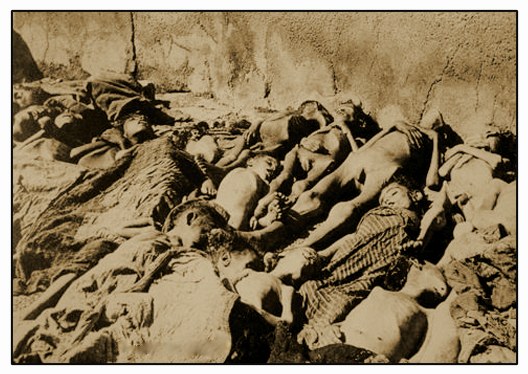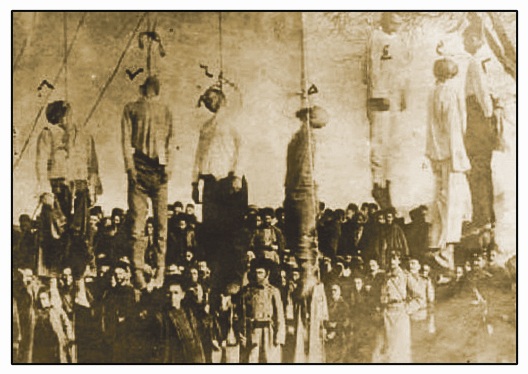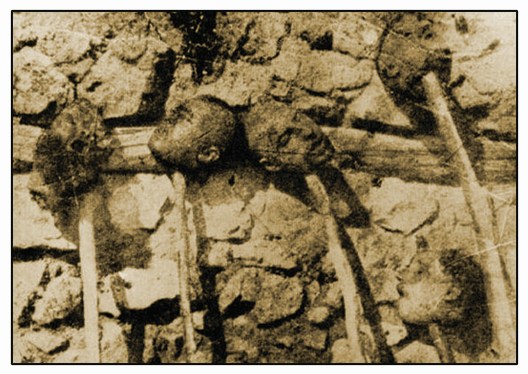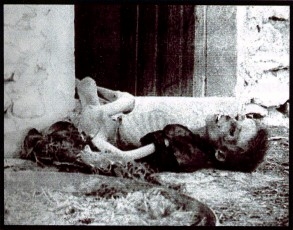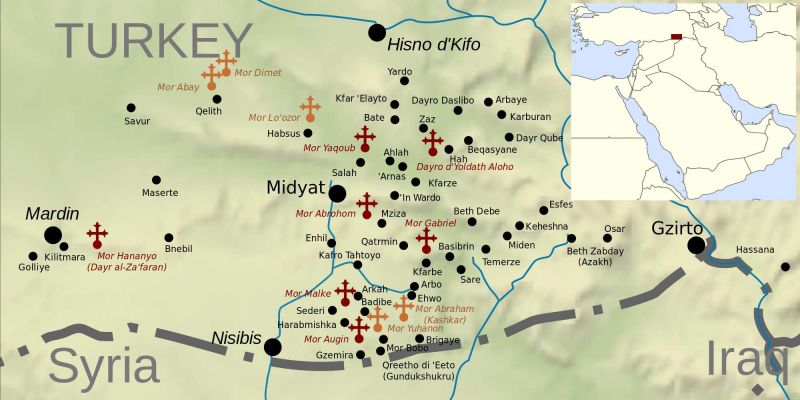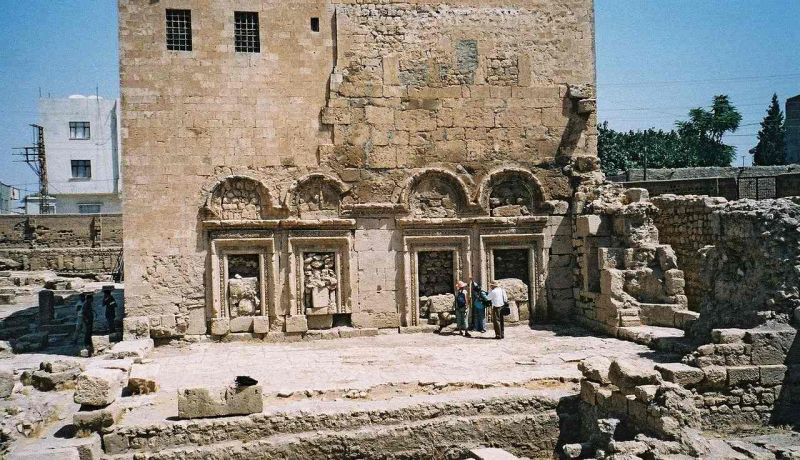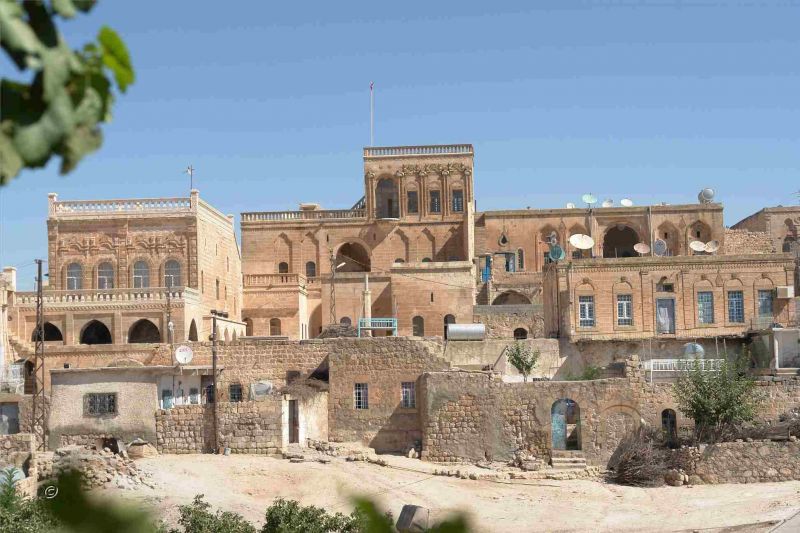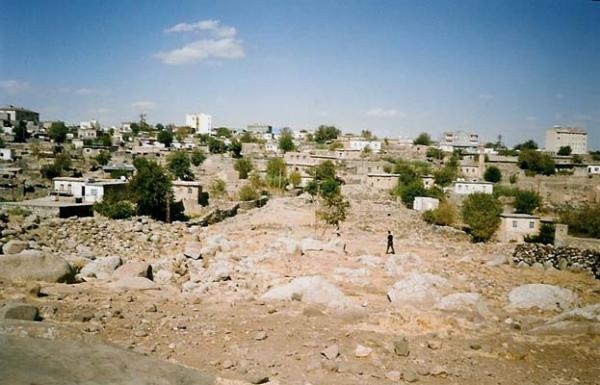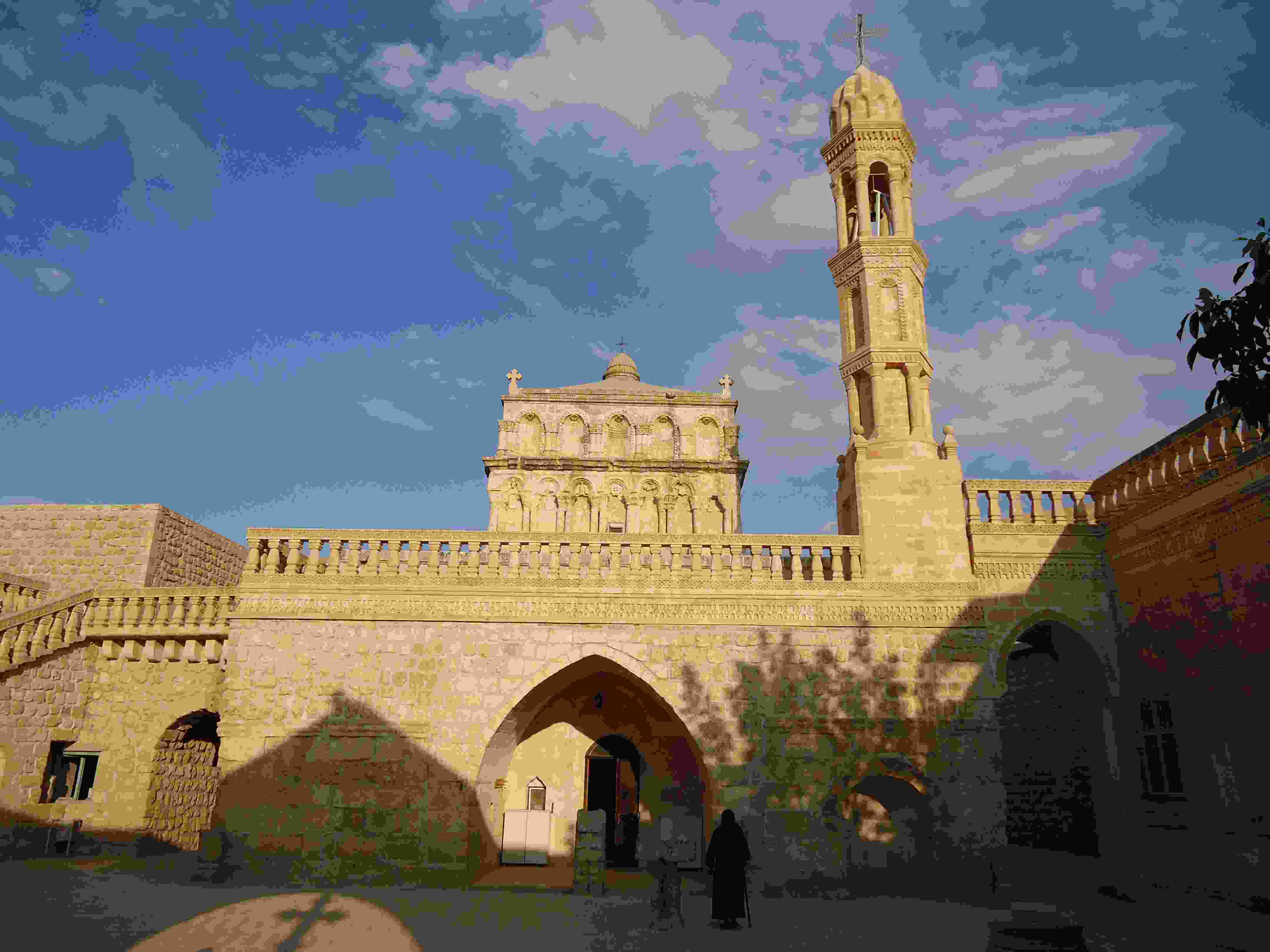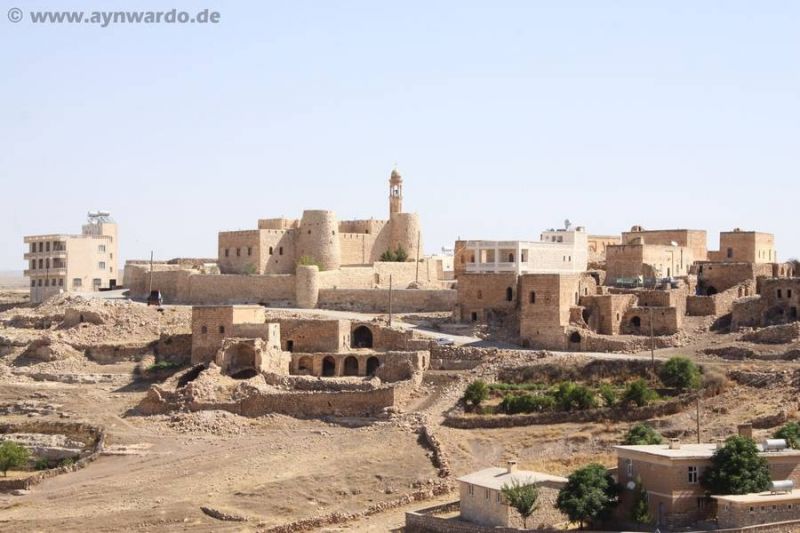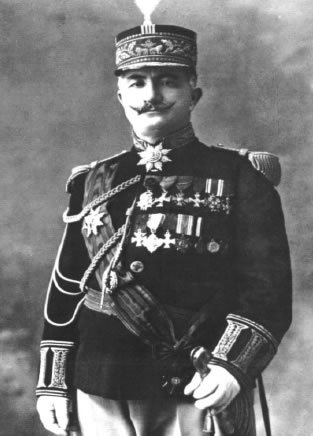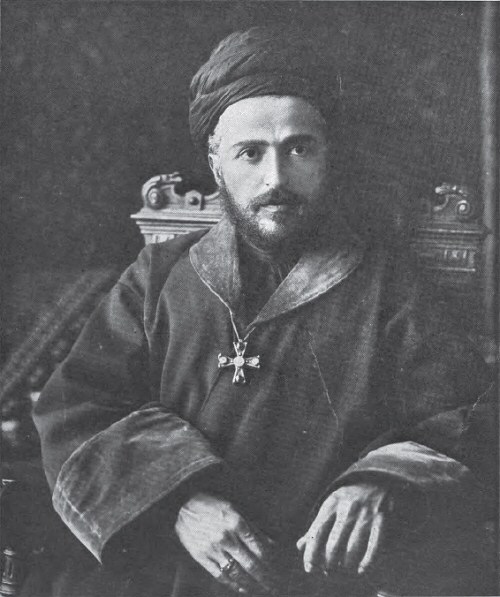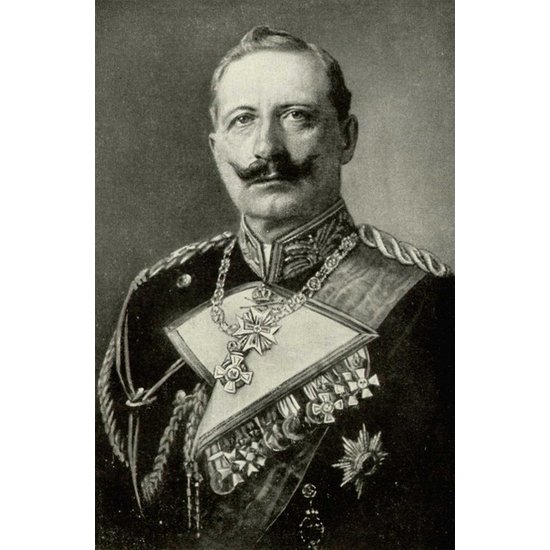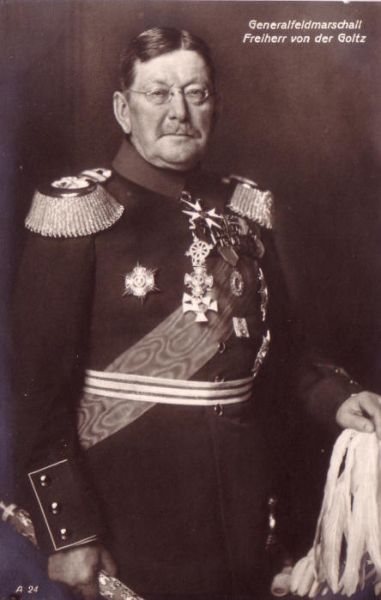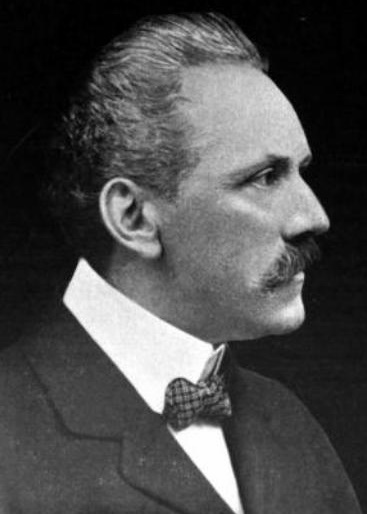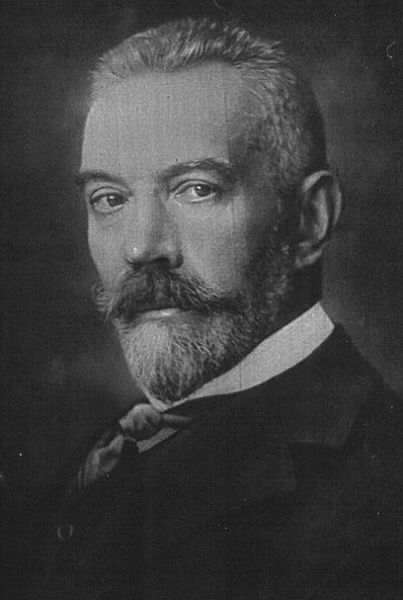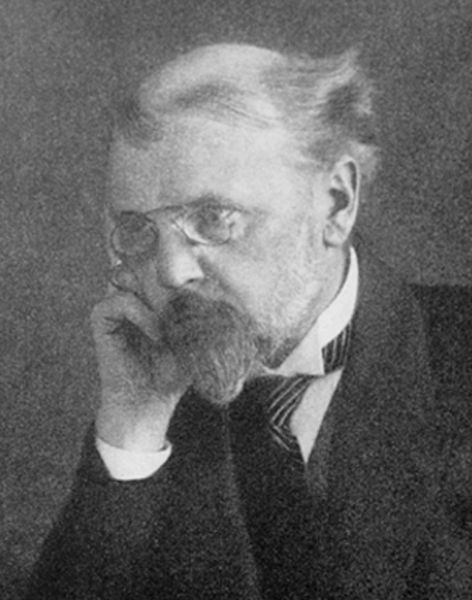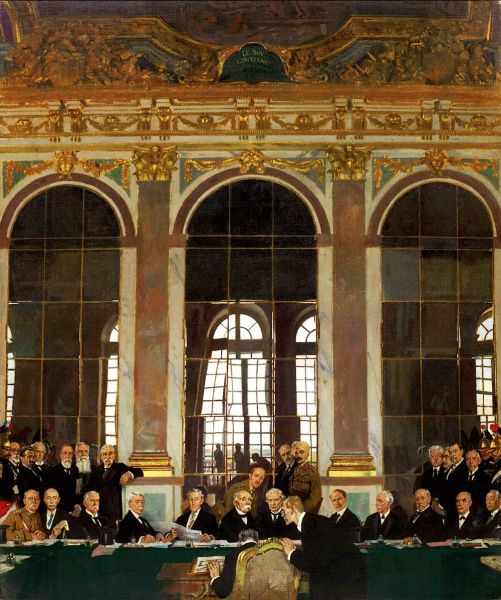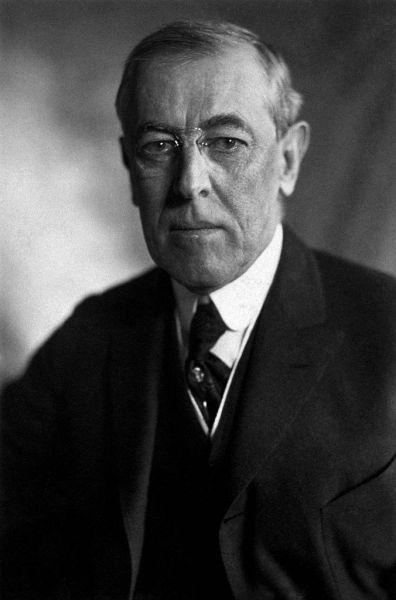More than 100 years of genocide of the Christian Syriacs in the Ottoman Empire 1915 - 1918
UN Convention against Genocide
On 9 December 1948, the General Assembly of the United Nations adopted Resolution 260, the "Convention on the Prevention and Punishment of the Crime of Genocide". The Convention defines genocide in Article II as "any of the following acts committed with the intent to destroy in whole or in part a national, ethnic, racial or religious group as such:
- the killing of members of the group
- the infliction of serious physical or psychological harm on members of the group
- the deliberate subjection to living conditions aimed at the total or partial physical destruction of the group, the ordering of birth prevention measures
- the forcible transfer of children from the group to another group".
In 1919, a court in Turkey, the official successor of the Ottoman Empire, sentenced the leadership of the Young Turks to death in absentia for crimes against humanity. Among them were the Minister of the Interior and Grand Vizier Taalat, War Minister Enver and Navy Minister Djemal. Prime Minister Damat Ferit condemned the atrocities of the Young Turks at the Senate meeting of 18.11.1918. He repeated this again in May 1919 in the presence of the Ottoman delegation at the Paris peace talks. When shortly afterwards Mustafa Kemal, also a member of the Young Turks and sentenced to death by the court, came to the government, he dissolved this court. Since then, the official language of every Turkish government until today is that there were "tragic events" during the First World War, but never a genocide. Many "Young Turks" even made a career in the Republic of Turkey, e.g. Ismet Inönü, who worked under Enver in the War Ministry, was also sentenced to death by the court and later became president and prime minister.
On June 9, 2000, 126 leading historians worldwide called these "tragic events" genocide, published a full-page ad in the New York Times and called on the world community to recognize this genocide as such. So far, Armenia, France and Sweden have officially recognized these "tragic events" as genocide against the "Christian minorities in the Ottoman Empire". In Turkey, coming to terms with the events and calling them genocide of the period 1915-1918 is considered treason. For this reason the Armenian journalist Hrant Dink was murdered by a 17-year-old nationalist on 19 January 2007. Dink called for an open approach and dialogue about this period. The people behind it were never caught.
The term "genocide of Armenians" has become internationally accepted. This is mainly due to the fact that there were many more Armenians and more Armenians than Suryoye survived and there is a large Armenian community abroad. Only 1/3 of the Suryoye survived and remained in the Orient. In Turkey the mention of genocide is still punishable by law. Therefore they could only come to terms with their wounds of the past in the Diaspora.
The Syriacs
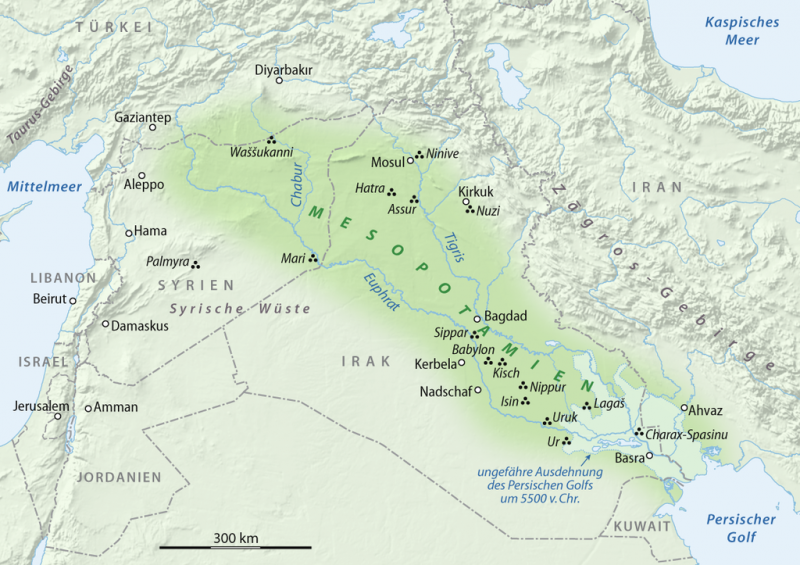
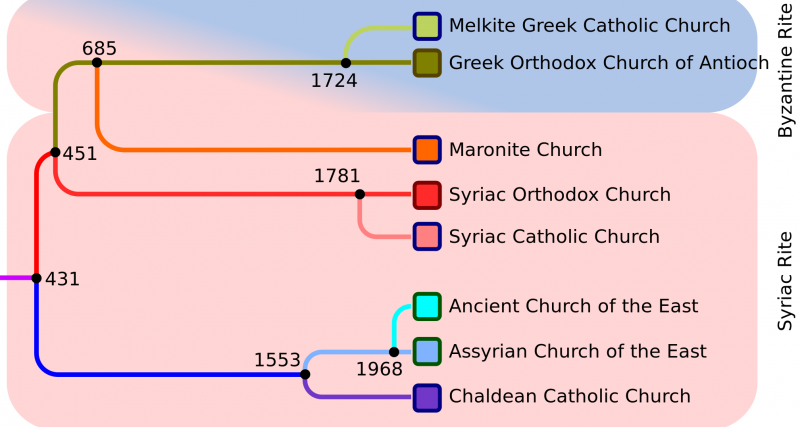
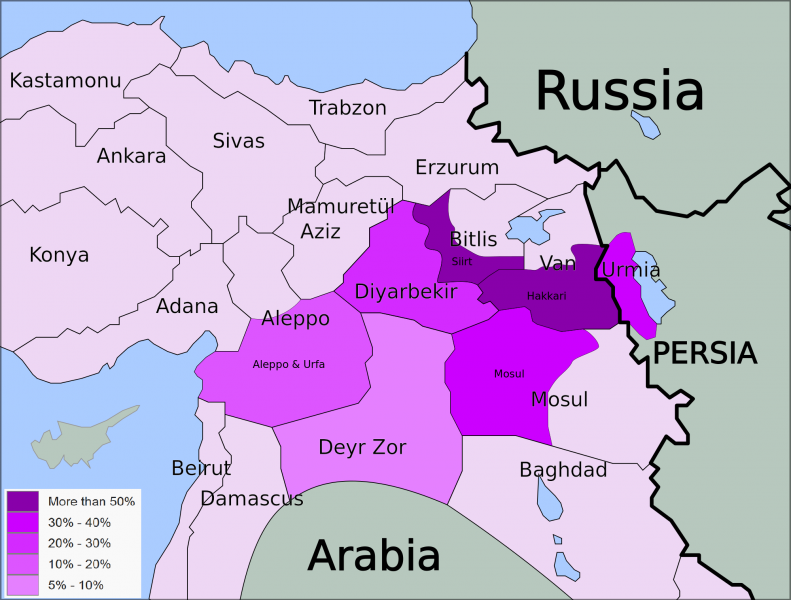
Today's Suryoye (aram. ܣܘܪܝܝܵܐ, turk. Süryani, engl. Syriac) are of Semitic origin and their roots can be traced back to the ancient oriental peoples and advanced civilizations of Mesopotamia, the Akkadians, Babylonians, Assyrians, Arameans and Chaldeans. They are also known by names such as Aramaeans, Assyrians, Chaldeans, Syrians and other regional or denominational terms such as Syrian Orthodox, Maronites, Melkites, Chaldean Church and Assyrian Church. The ethnic generic term is "Suryoye".
The home of the Suryoye is the Middle East and is concentrated in the Mesopotamian area (aram.ܒܬ ܢܗܪܝܢ - Beth Nahrin), which is known as the cradle of civilization. The northern border is the landscape of the Taurus Mountains and extends south to the Persian Gulf. The mountains of Iran border on the east and in the west are the Arabian desert and the plateaus of Syria. At the rivers Euphrates and Tigris is the hour of birth of the high culture, which took place around 12,000 BC. Today's Syria bears the name of the Suryoye, in which the majority of the population is Arab and the indigenous population was pushed back, making identification with "Syria" almost impossible.
Aramaic, the language of Jesus Christ, belongs to the Semitic language family along with Hebrew and Arabic and is the oldest spoken language in the world along with Greek and Chinese. From the 1st millennium BC onwards, Aramaic spread to Mesopotamia. During the Persian rule over Mesopotamia, Aramaic became the official language, the "lingua franca", in the entire Achaemenid Empire. It was spoken from modern Turkey to Afghanistan and parts of India. Parts of the Bible, for example the Book of Daniel, were written in Aramaic. Syriac, the dialect of the city of Edessa (Urhoy, Urfa), is the modern High Aramaic. It is used as a liturgical language in various churches of Syrian tradition. From the 8th century A.D. onwards, Syriac was replaced by Arabic.
The Suryoye were the first Christians and founded the first church in Antioch, which is mentioned in the Bible (Acts 11.26). Through various schisms and political events, the different churches came into being.
The eventful history of the Orient did not even stop for the Suryoye. Due to the Christian Eastern Roman Empire Byzantium itself, innumerable border conflicts between Byzantium and the Persians, the Islamization of the Orient by the Arabs and later by the Ottoman Empire, the Suryoye were decimated very much in number. The 19th century was marked by numerous waves of persecution. Around 1914, the Suryoye concentrated on the heartland of Mesopotamia, today's border area between Lebanon, Turkey, Syria, Iran and Iraq. The arbitrary drawing of the border through Mesopotamia in 1923, without regard to the indigenous Suryoye, has had dramatic consequences for the Suryoye to this day.
The Ottomans
On 19.08.1071 Seljuk Ghazi near Mantzikert overran the Anatolian plateau, which soon led to a mass flight of the rural population. The year 1071 marks the beginning of the Turkish land grab and the end of Christian culture in the Near East. Until 1087, the Seljuks ruled Cilicia up to the Sea of Marmara, including Edessa and Antioch. The number of nomadic Turks is unlikely to have exceeded half a million by the 12th century. However, Anatolia changed due to the constant immigration of Turkmen from Central Asia. The Ghazi expelled the Christians from the Anatolian plateau. Only in some areas could they hold on until the First World War, such as in pontoons or Cappadocia. The cave monasteries of Göreme and the underground cities illustrate how the Christians sought protection from the Ghazi, who fanatically practiced Jihad. When the Byzantines defeated the Turks at Magnesia (1302), the Ghazi emir Osman, the founder of the Ottoman Empire, appeared. On 29.5.1453 was the fall of Constantinople. Of the approximately 50,000 inhabitants, over 4,000 were massacred and a large part of the population enslaved. The Sultan abandoned the city to plunder, the imperial archives were completely destroyed and the Hagia Sophia (Greek for "holy wisdom") was converted into a mosque. With the exception of one single church, all the others were at least temporarily transformed into mosques, monasteries and libraries were destroyed.
The time that followed was very changeable, wistful and unedifying for Christians of all denominations. And yet, despite all their faults and weaknesses, the churches kept themselves alive. With the conquest of Mesopotamia, the Suryoye and Armenian churches were also subjected to this suffering.
The janissaries formed the Sultan's elite troop. Through the boy selection between 7 and 14 years, Christian boys were taken away from their parents, forced into Islam and brought up under military drill. They were loyal to the Sultan and received no pay except for meals. Their pay was the spoils of the next campaign. Thus Vienna was besieged twice. The first campaign in 1529 had to be abandoned due to the very early onset of winter. The Ottomans' urge to expand did not stop at anything. The greatest expansion was achieved in 1683. Jan III Sobieski of Poland-Lithuania defeated the Ottoman Empire under Kara Mustafa Pasha, which became the turning point in the conflict with the European states. The exposed military weaknesses of the Ottomans were exploited by the "Holy League" and the Ottomans were attacked from several fronts. In many other wars, the Ottomans gradually lost a large part of their European occupations: 1699 Central Hungary and Transylvania, 1736 Crimea, 1739 Northern Serbia with Belgrade and Little Wallachia, 1783 Crimea, 1792 Dnepr and Bug, 1830 Greece, 1878 Romania, Serbia, Montenegro and Bulgaria.
The more country losses the Ottomans suffered, the more they found themselves in financial hardship. The term "the sick man on the Bosphorus" became popular in Europe. Since the Ottoman Empire had introduced reforms very late, these hardly took effect and on 13 April 1876 the country went bankrupt. The payment system via Timare and the Spahis declined. It had to be paid more, because there was less and less land to distribute and it was also given to those not entitled to it. The means with which the Grand Viziers intervened to remedy the financial shortage of the Reich aggravated the crisis. A kind of tax lease was introduced and auctioned, the so-called "malikâne": the right to collect a certain tax. ...and the treasury immediately received the sum. The tax leaseholders, called "mültezim", now tried to squeeze considerably more tax out of the territory assigned to them than they had paid at auction, which made them hated by the rural tax-paying population. As a result, general corruption spread throughout the Ottoman Empire, and without "gifts" or bribes, nothing would work with the authorities. On the one hand, financial holes were plugged relatively quickly, and on the other hand, many incompetent people were turned into officials. The consequence was an intensified exploitation of the common people, especially of the Christian minorities. Added to this was the deterioration of the silver content of coins and the new sea route to India around Africa. Also the Mediterranean sea trade lost more and more importance.
During the "Great Game" between Russia and England, England tried everything to keep the "status quo". England's aim was to prevent Russia from obtaining key positions in south-eastern Europe and the Mediterranean, to control the trade routes to India and to stop Russia's attempts to gain supremacy in Asia. Through these efforts England became the most important trading partner of the Ottoman Empire.
The genocide during the First World War was caused by the demands of the Christian population in the Ottoman Empire, based on the Maronite-Druse conflict of 1860
On 22.05.1860 there was a conflict in Beirut between the Christian Maronites (Suryoye) and the Muslim Druze. This local conflict spread, so that in the end more than 40,000 Christians were murdered in Beirut and Damascus and its surroundings. Even the Ottoman soldiers brought in under the Beirut governor took part in the massacres. Only the exiled Algerian Abdelkader El Djezairi was able to protect the Christians in the Damascus citadel. 326 villages, 560 churches, 28 schools and 42 monasteries were destroyed. While the Ottoman Empire and England were on the side of the Druze, France was on the side of the Maronites by a treaty of 1523 as "Protector of Christendom". To protect the Christians, 12,000 European soldiers were stationed in Lebanon.
In the reform phase "Tanzimat-ı Hayriye" (salutary reorganization) from 1838-1878 the tax lease was abolished, the general compulsory military service was introduced and limited to five years, Christians were allowed to testify as witnesses in court and were guaranteed full security of life, honor and property, dissolution of the millet system (denominational limitation), ...
The conflict of 1860 between the Druze and Maronites was used by the European powers to exert further pressure on the Ottoman Empire and to introduce further reforms. The negotiated peace of Beirut and Damascus, where Christians were guaranteed self-government under a Christian governor general, was a model for the rest of the Christians in the Ottoman Empire. The economic weakness also caused the Ottomans great difficulties. The reforms introduced in civilian life met with great rejection among the Muslim population. General Helmuth Graf von Moltke commented on this state of affairs, saying that the "Ottoman Empire is trapped in Islam and therefore not capable of reform". On 23.12.1876 the new constitution was passed. However, it was repealed by Sultan Abdülhamid II after the outbreak of the Russian-Turkish War of 1877/78.
The Christians in the east of the empire had hoped for a similar regulation as in Lebanon, which would have meant a decentralization and the inclusion of the Christians into the executive also in Eastern Anatolia, in consequence an autonomy.
The massacres of 1894-1896
The later Patriarch Ignatius Afrem I. Barsaum (1887 - 1957) experienced as a small boy the massacres of 1894-1896. He later wrote down the events of that time. On 01 January 1895 in Edessa (Urfa) more than 13,000 Suryoye were murdered before the city. In Amida (Diyarbakir) 5,000 Christians were killed on November 1, 1895 and on November 3, 1895 in Tal Mozalt 3,000 Suryoye were killed. Over 3000 Armenians were burned alive in the cathedral of Edessa on 28.12.1895. Nationwide the number of Christian victims had been indescribably high. A total of more than 200,000 Christians were murdered during this period by Turks and the Kurdish Hamidiye. The prisoners had to sign confessions under torture that they had been nationwide Christian conspiracies.
The strategic assassination began on 30.09.1895 after an Armenian demonstration in Constantinople and spread over the whole country. The prehistory had already begun in 1894 in the Sason mountains (Batman province), when Armenians continued to refuse to pay the djizya (head tax), based on the dhimmi system (laid down in the Koran), to the Kurdish feudal lords. The local uprising was crushed and ended in a massacre. Sultan Abdülhamid II followed his previously deposed brother Murad V on 31 August 1876. At the beginning of his 33-year regency he supported the reform course of the "Tanzimat-ı Hayriye". Due to numerous country losses abroad, national bankruptcy and the pressure of the European powers, the Sultan's leadership increasingly followed his predecessors. He ruled in an authoritarian manner and bypassed the ministries. He suppressed the young Turkish movement and built up an effective censorship and espionage system. In 1891 he founded the Hamidiye regiments named after him, modelled on Russian Cossack units, which consisted almost exclusively of nomadic Kurds of Sunni faith. Their founding statute was the "defence against foreign assaults and oppression". The Sultan increasingly had the idea of an "enemy in his own country" allied with the imperialist powers. All reforms in favour of the Christian minorities were reversed, since in his eyes they had led to nothing other than the strengthening of the influence of foreign powers by Christian minorities traditionally associated with the West or Russia. All Christian officials were replaced by members of the Hamidiye. The Kurdish nomads were granted far more rights than Sheikh Ubeydullah had ever demanded. Although he did not grant them autonomy, he appointed them "by his graces" as marauding rulers in the Anatolian eastern provinces. From the beginning, the Kurdish Hamidiye were called upon to enrich themselves at the expense of the Christians. Only the officers received pay. The crews only received weapons and were forced to make their living by raiding, which led to ethnic tensions in the eastern provinces.
The Young Turks
The term "sick man on the Bosporus" was coined by the Russian Tsar Nicholas I in 1852. The multi-ethnic state threatened to tear itself apart from within and without through countless conflicts. The political movement of the Young Turks wanted to prevent this, but in the end only achieved ruin.
The secret society of the Young Turks "İttihad-ı Osmani Cemiyeti" ("Association for the Unity of the Ottomans"), founded on June 02, 1889 by the students of the Royal Medical School Ibrahim Temo, Ishak Sükut and Abdullah Cevdet, pursued the reinstatement of the 1876 constitution and further reforms following the example of the "Tanzimat-ı Hayriye". The secret society was modelled on the Carbonari, an Italian national secret society under Austrian occupation, and was organised in cells. Each member was registered with a number instead of a name. The members had to swear absolute loyalty and secrecy on Koran and revolver in front of a table with green flag of the Prophet. The later "Committee for Unity and Progress" quickly developed into the most important opposition in the Ottoman Empire.
Dr. Baheaddin Schakir, private physician to Prince Yusuf Izzedin, was one of the earliest members of the committee, together with Talaat. Ahmed Riza is the head of the committee in Paris, with him is also Dr Mehmed Nazim. Due to the persecution of the opposition by Sultan Abdülhamid II, many members of the committee had to go into hiding or were arrested. Shakir and Talaat were also arrested or banished. Talaat sent Shakir to Paris in autumn 1905 to unite the cells of Paris and Thessaloniki and win Riza for himself. For Riza, the Islamic religion was only a means to an end and an independent culture, which set itself apart from the West and united all Ottoman Muslims. The hallmark of this right-wing modernist movement was the complete rejection of Western values with simultaneous use of all Western scientific and technical achievements. Through this common denominator the renewal of the Ottoman Empire should be possible.
The nationalist wave that was widespread at that time also seized the Ottomans. The journal "Türk" published the essay of the Tatar Yusuf Akchura in 1903 in Cairo, which had the same effect on the Ottomans as the Communist Manifesto had on the Marxists. "There is no greater injustice than the disrespectful and hostile attitude of the West towards the Turks. Is it not unfair to ignore the special talent of a nation that grew from a small tribe into a great state, a nation that from a remote corner of Asia, Sogud, reached the glorious centre of Europe, Vienna, by relying on the sword?" Turk is strictly anti-Armenian. "Why should we bow down to these Armenians who make ridiculous figures of us when we never deserved it. The wealth they have acquired, the skills they have lived at our expense. Do not buy from Armenians." Until then, only religious lines had been drawn, not ethnic ones. Akchura wrote in the log book of the committee that it means the end of the Ottoman Empire if there is too much freedom and too much equality for the non-Turkish peoples in the Ottoman Empire.
In order to achieve an Ottoman oppositional umbrella organization with Armenian participation, Shakir is negotiating with the Armenian parties Hunchak and Dashnak in this area of conflict. Shakir knows that the Armenians are much better organized and that he is dependent on them. He wanted to give them the illusion of a liberalism based on Turkification. He wanted all Christians to become "Christian Turks" and forget their origin. After some negotiations he dropped this plan and pushed his original plan, the transformation of the Committee for Unity and Progress into a revolutionary Turkish fighting party.
Shakir wanted to delay the Armenian question of autonomy as much as possible in order to strengthen his own organization. "What we need is strength, not feathers". In a letter to party friends in Bulgaria he writes: "Our committee is a purely Turkish committee". He makes it clear to party friends in the Caucasus that the Armenians are in reality nothing but infidels and enemies of Islam and that one day they should be treated accordingly. Nevertheless, in 1907 he entered into an alliance with the Dasnaks in order to neutralize a potential enemy as early as possible.
Talaat was from the beginning the head of the Thessaloniki cell, which wrote into its statutes that "only Muslims" could be admitted as members. In a very short time he was able to win many young officers of the Third Army for the ideas of the committee. Among them was the 25-year-old Captain Ismail Enver, who later became Minister of War. On 27.09.1907 the cells of Paris and Thessaloniki united to form the "Ottoman Committee for Progress and Unity", called the Committee. Shakir becomes the head of the headquarters in Paris and Talaat secretary of the domestic headquarters.
During this time, the foundations for future policy are laid. The system of Fedaii "soldiers for jihad" is laid. Kushcubashi Esref, "the man for the rough", becomes one of the most famous Fedaii and is loyal to Enver. Here the spirit of war is cultivated, which does not need to shy away from conventions. The central organ Surayi Ümmet wrote in 1907: "The Ottoman sword has proven its glorious power in the long term". In Thessaloniki, the committee issued the slogan to form irregular political gangs, which were to be placed under politically reliable officers from the Third Army. Nazim gets Talaat's approval to use these gangs for revolutionary tactics.
After numerous political assassinations by the Committee in Macedonia and Kosovo, it makes an open appearance and demands the reinstatement of the 1876 Constitution, and after the Third Army seriously announces the long predicted march on Constantinople on 23.07.1908, the Sultan surrenders. That same night, the Constitution of 1876 is reinstated by a decree of the Sultan. Europe, remembering the history of its own revolutions and freedom movements, lapsed into astonished admiration. Turkey expert Ernst Jäckh soberly noted that the committee sees freedom as a liberation from the intervention of foreign powers, as protection of Ottoman integrity.
The members of the new Chamber of Deputies were not elected but were appointed by the committee. The idea of sharing power with other parties would have meant "treason to save the country" in the eyes of the committee. So the time of freedom, brotherhood and equality did not last long. Already in April 1909, 20,000 Christians were murdered in Adana by the mob and the Third Army. There was a rumor that the Armenians wanted to ask foreign powers to intervene so that they could have their own state. In reality, the committee took action against disagreeable opposition members. The committee of the Itidal newspaper wrote on 28.04.1909 "No foreign government has the right to interfere in the internal affairs of another state". Because of the "European concert" of great power interests, the European states were not interested in it, although their fleets were at anchor off Mersin.
The Balkan Wars
In the autumn of 1912, the Balkan League consisting of Serbia, Bulgaria, Greece and Montenegro declares war on the Ottoman Empire. In the weakening of the Ottoman Empire through various uprisings and the Italian-Turkish War, the Balkan League saw the opportunity to free itself from the centuries of occupation. At the end of the First Balkan War hundreds of thousands of Muslims fled from the Balkans to the East. These refugees were mainly settled in Christian areas in the east of the Ottoman Empire, where there was considerable religious and ethnic tension. Bulgaria took Adrianople (today Edirne) and stood at the gates of Constantinople. In the Second Balkan War, Romania and the former allies of the Balkan League fought each other for the distribution of the territories. Here the Ottoman Empire under Enver and 3500 Fedaii seized the opportunity and retook Adrianople. Due to the high level of ethnic violence against civilians, the first population exchange was agreed in the Peace of Constantinople. Here too, Muslims were once again settled in the Christian settlement areas, which further fuelled the already tense situation.
War and secret society
On August 2, 1914, the committee in Constantinople signed the secret treaty with the German Reich, bypassing parliament. That same evening it was decided to form armed political gangs, the "Teskilati Mahsusa", to carry out "operations" in the ranks of the Russians in the Caucasus. The high command was given Bahaeddin Shakir and thus the party. "It is a fact that these special commandos carried out tasks that were forbidden to government troops and legal guardians of law and order," said the Fedaii Kushcubashi.
From the idea of the Fedaii and following the example of "Hassan the Butcher" in the Balkans, Enver founded this special force. Chief ideologue Ziya Gökalp preaches that everything the fatherland demands is sacred and justified without regard. At this time Shakir is in Erzurum. He wants to blackmail the Armenians at the Dasnaken Congress by offering them to go to war against Russia for the Ottoman Empire and in return to get autonomy under Ottoman control. Since the constitutionally guaranteed rights were not implemented, the war in the Caucasus goes through Armenian territory and many Armenian volunteers fight in the ranks of the Russians, the Daschnaken abstain from a fratricidal war in the service of the Ottomans. That sees again Shakir as betrayal of the Ottoman Empire and tries now to fight the "inner enemy". On the side of the German Reich the Turks go to war against Russia in autumn 1914. Before that the Black Sea Fleet was attacked by the German Admiral Souchon von der Goeben and Breslau without a declaration of war. The Caucasus campaign becomes a disaster for Enver, so that he had to resign as commander of the 3rd army. The Armenian units fighting on the side of the Russians had a big part in the Russian victory. By refusing to fight for the Turks and the lost war in the Caucasus, Enver blamed the Armenians after his return to Constantinople and the dagger-putting legend was born to eliminate the "inner enemy". In the end all non-Muslims were "inner enemies".
The genocide and deportations
In February 1915, all Christians serving in the army were withdrawn from the front, disarmed and transferred to work battalions, where they did forced labour as porters or in road construction, e.g. the continued construction of the Baghdad railway. When the work was finished, they were killed. In the Christian settlement area, all goods were confiscated as an emergency measure to build up supplies for the army. During raids and house searches the inhabitants were terrorized. The weapons sold to the Christians under duress and at inflated prices were photographed and used as "evidence" for alleged nationwide uprisings.
The Wali Sabit of Harput openly admitted to the German Consul Paul Schwarz and Pastor Johannes Ehmann on 16 March 1915 that he had learned by coded dispatches that the committee had decided to eliminate all Christians in the Reich. The Wali told Schwarz that the Christians in Turkey would be destroyed, because their wealth and numbers had increased, they had become a danger for the ruling Turkish race and had to be exterminated by all means. The decision of deportations and extermination of Christians (officially "decree against persons who act against the government in times of war") was decided at the height of the Dardanelles crisis between 13 and 16 March 1915.
Dr. Mehmed Nazim "If we continue to be satisfied with the kind of local massacres that took place in Adana and other places in 1909 (...), if this cleansing does not turn into a general and final one, it will inevitably lead to damage. It is therefore urgent to eradicate the Armenian people completely, so that not a single Armenian is left on our earth and the concept of Armenia is erased. We are now at war, and there is no better opportunity than this. The intervention of the major powers and the protests of the press will not be taken into account. And even if that should be the case, the matter will be a fait accompli, forever."
When Talaat dissolved parliament on March 13, 1915, the Wali of Aleppo Djelal confirmed to the German Consul Walter Rößler that Talaat had admitted that he wanted to take advantage of the moment to thoroughly clean up his internal enemies without being disturbed by interventions of foreign diplomats. The Armenians, Suryoye and Pontus Greeks were without distinction considered to be the "internal enemy".
The Deportation Act prescribed the deportation of population groups for military reasons or on suspicion of espionage or treason. The key term in the law was "suspicious" (Turkish "hissetmek"). Even a suspicion or presumption was enough to justify the forced resettlement.
The beginning of the extermination made the old stronghold of the Armenian Zeitun on April 2, 1915. There, Djemal orders that Zeitun and all neighbouring villages be deported. By April 20, more than 20,000 Christians in the vicinity of Zeitun had been deported and the town had been renamed Süleyman, so that nothing reminds one of "Christians and foreign elements".
On April 24, 1915, the entire Armenian elite was deported to Constantinople and 235 of them were murdered. From May onwards, nationwide measures are taken to deprive the Christians of their leadership.
The "Teskilati Mahsusa" was now dissolved by the Ministry of War in Enver and under Baheaddin Schakir had only the task of "eliminating the Ottoman Christians".
On 24 May 1915, the Entente powers Great Britain, France and Russia threatened the Turks to hold them accountable after the war for the consequences of "crimes against humanity" according to the Hague Land Warfare Convention. Unimpressed by this, the committee passed a law on June 10, 1915, which transferred "abandoned property" of the Christians to the Ottoman Empire. The execution of the forced resettlements always followed the same pattern. The Christian population of a locality or town was requested to be ready for resettlement within a short period of time. The columns of Christians were guarded by the gendarmerie, which was under the control of the Ministry of the Interior and members of the "Teskilati Mahsusa". Frequently there were already lootings in the villages by the local Muslim population, in which the gendarmerie and the "Teskilati Mahsusa" also participated and enriched themselves. Women were raped, children were separated from their parents in order to be able to sell them into slavery later or to assimilate them in state-run Turkish orphanages. Soon after the columns broke up, families were torn apart and women were separated from their husbands. In most cases the men were immediately massacred.
The remaining Christians, mostly women and children, had to move south, usually on foot. The official destination of the resettlements were the desert areas in Ottoman-controlled northern Syria or northern Iraq (Mesopotamia). Hunger, thirst, complete exhaustion and epidemics led to the death of tens of thousands of deported Christians. To help them lose their strength more quickly, the deportees were led in detours over impassable, often mountainous terrain where there was no water and no protection from the blazing sun. Those who were too slow were beaten, shot or stabbed with a bayonet. Many Christian women preferred suicide and threw themselves into the Euphrates or Tigris. Other Christian women were tied back to back and thrown down the gorges into the river. The bodies that poisoned the Euphrates and Tigris rivers drifted for months down to Mosul and the Syrian desert. Not only the guards tortured, robbed and murdered the deportees, but also Kurdish gangs or the local Muslim population. Many Muslims, for example, profited from the situation of those who were dying of thirst by selling them water at completely excessive prices. The authorities not only tolerated the atrocities, but often supported and organised them. The survivors of the deportations were "settled" in concentration camps along the Baghdad railway - without food and shelter. Hunger, thirst, exhaustion and epidemics did their work too slowly. The aim of the young Turkish population policy was that no non-Turkish ethnic group anywhere should make up more than 10% of the total population. The most notorious camps were in Der-es-Zor and Ras-ul-Ain. From spring to winter 1916, these camps were liquidated by systematic massacres and mass burns in cave systems containing oil. Oil-bearing caves were set on fire, such as the cave labyrinth still called "Chabs-el-Ermen" ("Armenian trench") near the village of Schaddadeh on the Khabour River. Along the Khabour River, the entire population of the Suryoye was wiped out. Numerous atrocities described by contemporary witnesses are without equal. In Bitlis, for example, numerous young women were crucified naked in June 1915. Children's hands were chopped off. The Armenian bishop of Diyarbakir had glowing horseshoes nailed to his feet so that he would not start the death march "barefoot".
Victims and losses
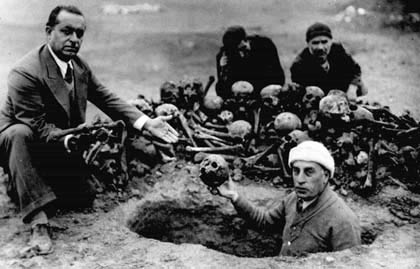
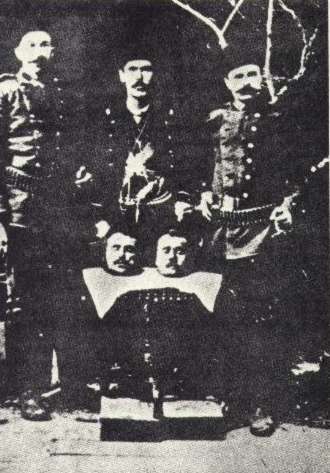
The American political scientist Rudolph Joseph Rummel uses the term "democide", in the case of intentional mass killings by a government. In 1914 the multi-ethnic state of the Ottoman Empire had a population of about 13 million people, about 1/3 of them Christians. These in turn had a 65% share of the country's wealth and economy. 914,000 Suryoye, 2.1 million Armenians, 1.2 million Pontus Greeks and 1.2 million Kurds. If one looks at the number of Suryoye victims, only about 250,000 Suryoye lived in Mesopotamia after the genocide. 2/3 of the Suryoye were killed, forced to convert or were considered missing. The Armenians have 1.5 million victims to mourn. The Pontus Greeks had "only" about 350,000 victims, because many of them were able to flee to the state of Greece. The Suryoye and Armenians had no protective power as neighbours. The material loss (without land) of the Armenians alone was estimated at 7.9 billion French francs at the Paris peace negotiations in 1919/20. According to today's calculations, this amounts to approximately 158 billion euros. Due to the smaller population, the property of the Suryoye can be estimated at half of the Armenians. Over 2200 churches and monasteries were destroyed or converted into mosques. Thousands of books and old manuscripts of inestimable value were burned. The indigenous people of Mesopotamia developed the script, the wheel, the beer, the clock, the calendar and astrology ... and with a history of more than 5000 years, they were wrested from their homeland and cultural identity and thus from their roots within 3 years. Another victim is the denial of the genocide of Turkey until today and the spectatorship of many European states due to economic interests.
The fate of individual cities and their surroundings
The number of cities and villages destroyed is almost impossible to reproduce. According to statistics from 1923, 94% of the towns and villages of Suryoye were destroyed. A large part was lost forever and could not be rebuilt because there was no population left to build it up. The survivors could only write down what happened years later. Here a fraction of it shall be reproduced from the book "Gunhe d-Tur Abdin by Dean Sleman d-Beth Henno". The massacres against the Christians in Tur Abdin were mostly organized by Wali Reshid from Diyarbakir.
Nisibis (ܢܨܝܒܝܨ, Nusaybin)
Nisibis is one of the oldest cities in Tur Abdin and is already mentioned in the 10th century BC. About 400 Christian families lived in the city. When the inhabitants heard that the government was recruiting men for the war, some of the men hid in the surrounding villages. The Kurdish gendarme Fateh only looked for men fit for military service in Christian villages. The Suryoye believed the incantations of the general of the V. Army Qedur and the Kurdish clan leaders that only Armenians should be killed, but no Suryoye, and thus remained in the city. After the Turks killed the Armenians in the city, they committed the Suryoye. Before killing the Suryoye, the general ordered the monk Estiphanos to come to him to find out where the escaped men were, because the government did not want to harm the Suryoye. The monk believed him and wanted to show the soldiers the way to the hiding places in the mountains. However, the soldiers made a detour and led the monk to a place called "Gernawas". The monk was forced to convert to Islam and deny Jesus. When he refused, first his hands and then his feet were chopped off. The monk recognized one of the soldiers and asked him why he was torturing him, since he had enjoyed bread and salt with him. The soldier tormented him all the more cruelly. The monk shouted that he believed that the soldier would not see the city again in peace. After the monk was killed, the soldiers went back to the city. The soldier was stung by a wasp before reaching the city and died. One day later, on June 2, 1915, the soldiers led the rest of the town's population to Phulutin Square to announce that they would be deported to Mardin. However, the soldiers led everyone out of the city to the square "Nirba Farfoshe" and started to slaughter one after the other like lambs. Each one was asked beforehand whether they would convert to Islam. Since none of them converted, the entire city was robbed of its Christians and the bodies were thrown into the well. After this massacre, the government put together a regiment led by Rafiq Nizam Ad-Din, Qedur and Suleyman Magar to wipe out the Christians in the area, and they succeeded in the same way.
Medyad (ܡܕܝܕ, Midyat)
Medyad is already mentioned in the 13th century BC and was one of the largest cities in Tur Abdin. On May 24, 1915 the officer Hüseyin came to the city and told that the feudal lord Amin Aga had killed the Christians in Hesno d-Kefo (Hesno d-Kefo was the first city in Tur Abdin whose Christians were killed). The mayor had him arrested and flogged as a liar. When the Kurdish clans Eschkafto and Aderman attacked the village of Habsnas, the mayor had the Kurdish clans driven out as a deception. On June 9, the mayor ordered a search of the entire city for weapons. The leaders of Medyad were arrested. Gallo Shabo, the mayor of Aynwardo, was among the detainees and was released to deceive the Suryoye. On 15 June, the detainees, members of the Hirmiz family, were allegedly taken to Estal and Schulelat. However, they were taken to Kfar Heworo to the Sito Well, where they were massacred and their bodies thrown into the well. After the village of Salah was attacked by the Kurdish clan on June 19 by the feudal lord Haci Beschar Beg, the mayor called a meeting to calm the Suryoye in Medyad. Nevertheless, they began to prepare for the fight. On July 3, the mayor ordered the city to be bombarded with cannons. Official forces of the III Army, sent by Baron v.d. Goltz for reinforcement, Kurdish clans from Amida, Mardin, Siirt, Cizre and the surrounding villages participated. The massacre lasted a whole week. After the killing, the looting and searches of the city began. About 500 Suryoye were found in caves and hiding places. They were brought to the house of Mussa Shamosho Girgis and held for two days. Afterwards all persons older than five years were deported and killed on the way to Astel. The younger children were given to Kurdish stepparents for re-education. Only a few were able to flee to Aynwardo, the Izla Mountains and various monasteries. 25,830 Suryoye were murdered in Medyad. In the museum of the city about its history there is nothing about the Christians.
Beth Zabday (ܒܝܬ ܙܒܕܐ, Azech, Idil)
Beth Zabday is already known before the birth of Christ and was one of the first cities to adopt Christianity and has 8 churches. The inhabitants of Beth Zabday and many other villages could defend themselves for a long time, because they did not trust the incantations of the Kurds or the Turks. In Beth Zabday there were 2,000 Suryoye under arms and they were able to withstand the first attacks from June 18 to July 28, 1915. The attackers did not succeed in taking the town and attacked again on November 1 under the leadership of officer Ömer Naci. The second attack of the official troops and the Teskilati Mahsusa with 8,000 men lasted 24 days. Yeshuh Hanna Gabre was the leader of the defenders. As the fighting claimed more and more victims on both sides, Gabre dared to withdraw. He took one son from each family with at least 3 sons and formed a troop of 50 men, divided into groups of 5. The retreat was successful and a cease-fire was achieved. Max Erwin von Scheubner-Judge was also an advisor on the side of the Turks and Kurds, who was surprised how the Suryoye could defend themselves successfully. Ömer Naci sent a telegraph to Djemal and requested a reinforcement of another 15.000 soldiers from Mosul. The bishop and later Patriarch Mor Ignatios Elias III Shakir and his Catholic counterpart Mor Ignatius Emanuel in Mosul were able to prevent this. The Kurd Hisse Bereket from the west of Nisibis, returning from the Russian campaign, was angry about the defeat of the Kurds and dared a renewed attack on February 28th 1916. After numerous victims on the side of the attackers and 9 victims on the side of the Suryoye, a final armistice was reached. In April 1922, the Kurdish Sheikh Nuri negotiated a peace treaty with the inhabitants of Beth Zabday.
Hah (ܚܐܚ, Anitli)
Hah (ܚܐܚ, Anitli) is mentioned for the first time in 879 B.C. According to legend, the Three Wise Men had the Church of Our Lady built on the way back. The leader Rash-sho Henno, the owner of the palace, and Malke Phijyo. Rash-sho had heard many rumors about massacres and went to the Armenian monastery 300km away to see if the rumors were true. After his return, Rash-sho taught the people of Hah. The Kurdish leader Hadgo of the Kurtam clan confirmed the statements of Rash-sho and recommended them not to trust anyone. So they began to expand and strengthen the palace. Both wells inside the palace were filled up with water from the other wells and the supplies were brought to the palace. Many Suryoye of the surrounding villages could seek shelter here and about 2000 Suryoye survived the attacks.
Aynwardo (ܥܝܢ ܘܪܕܐ, Gülgöze, "eye of the rose")
Aynwardo (ܥܝܢ ܘܪܕܐ, Gülgöze, "eye of the rose") and was founded in the 10th century. After Medyad was destroyed, it was the turn of Anhel and Aynwardo. Since the Turks and Kurds did not want to fight on two fronts, they attacked Aynwardo first. Many Suryoye had already heard about the massacres and fled to Anywardo, as the fortress-like church of Mor Hadbashabo offered protection. The military leader Mesud Mirza from the village of Mzizah organized the defense again and again and breathed new courage into them. The number of attackers now amounted to 13,000 men, as the Kurdish clans of Ahmed Aga, Salem Aga and the Muhallemites (Suryoye converted to Islam) joined the troops from Medyad. Since the village was not taken after ten days, Reshid sent a large cannon from Diyabakir (Top). The defenders ran out of ammunition, so they searched the village at night for metal to cast bullets. In the event of a failure, the defender Saffo managed to steal the attackers' banner and later throw it into the fire. The stench of corpses on the defenders' side polluted the air. One month after the fighting began, Sheikh Doro tried to mediate and promised that if the weapons were handed over, no one would be harmed. The Suryoye did not believe him and continued to fight. The attackers became even more angry and attacked the village for 60 days. Only when Sheikh Fathallah started the negotiations, a ceasefire was declared. The Suryoye handed over their weapons to Sheikh Fathallah, who swore that the village would not be attacked anymore. The attackers withdrew. But countless people were killed in the following escape and when leaving their homes.
The Suryoye of the East
In August 1914, the Patriarch of the Old Apostolic Church of the East, Mor Shimun XIX Benjamin, negotiated with the Governor of Van Djevdet, a brother-in-law of the Minister of War, Enver, about the "neutrality" of the Suryoye under his care. Despite all this, there were massacres in October and November 1914 against the Suryoye in the east of the Ottoman Empire, in the Hakkari Mountains, in the Seert and Mosul area and in northern Iran. After these events, the Patriarch declared war on the Ottoman Empire after a tribal meeting in Diz on the Great Zab on May 10, 1915. This was officially communicated to the governor of Van. In June 1915, the Vali of Mosul attacked the Suryoye with the VI Army of Colmar von der Goltz and called on the Patriarch to surrender. After negotiations with the Russians for military support failed, about 70,000 Suryoye moved with their cattle herds across the Persian border to Urmia in autumn 1915 to escape the massacres of the Kurds. In the Hakkari area, more than 30,000 Suryoye were murdered in 1915/1916. The Suryoye organized their self-defense in May 1916 under the leadership of Agha Petros D'Baz and the Patriarch. The fate of the Suryoye in the East depended on the situation of the war between Turkey and Russia. Christianity was completely wiped out in the town of Seert, where the famous "Chronicle of Seert" was written in the 11th century. The churches were either blown up or converted into mosques. On 28.01.1916 Paul Graf Wolff Metternich reported to the Gracht to Berlin that the entire Christian population had been murdered in Seert in the north of Tur Abdin. On 3 July 1918, after the peace negotiations with the Kurdish leader Ismael Agha (Simko) in Kohnashahr (Haftvan) near Dilman, the Patriarch was shot in the back of the head while still at the negotiating table. In Urmia they fought against the Ottomans at the side of the English and were considered the "smallest allies". The promised arms deliveries of the Englishmen never arrived and they were downright worn out by the Kurds. In 1922/23 the survivors wanted to return to Hakkari and were finally driven away by the Turks to the north of Iraq, where they built new villages. On 7 August 1933 they were attacked again by the forces of the newly founded state of Iraq and fled to the Khabour in Syria. These attacks killed over 10,000 Suryoye, known as the Simele massacre.
Aid and abetment of genocide
During the massacres of the Christians in 1895/96, the German Emperor Wilhelm II and Lord Salisbury were of the opinion that Sultan Abdülhamid should be deposed. Shortly afterwards Realpolitik gained the upper hand again. To counter the Entente powers, the partnership with the Ottoman Empire was of paramount importance for the Empire. Thus Emperor Wilhelm II declared on his second trip to the Orient on 8 November 1898 in Damascus: "May the Sultan and the 300 million Mohammedans scattered around the world worship their caliph in him, who can be assured that the German Emperor will be their friend at all times". The foundation stone for the further conduct of the German Empire had been laid. The European public was very irritated by this. Not only because of the claims to world power that had been made, but also because the Emperor identified himself with the regime of the outlawed Sultan Abdülhamid. The empire had no territorial ambitions for the Ottoman Empire, it served the dreams of a future world power role and the Baghdad Railway was a first beginning to this.
When, at the insistence of the German Empire, jihad against the infidels in the Ottoman Empire was proclaimed at the beginning of World War I, about 800 military personnel, diplomats and advisers of the Germans were working for the Ottomans. One of them was Marshal General Colmar Freiherr von der Goltz, reorganizer of the Ottoman Army, Armenian-hater and General of the VI Ottoman Army. He personally developed plans for the deportation of the Armenians. Karl Anton Johann Eduard Sylvester Boettrich was as a member of the German military mission in the war chief of the Turkish field railway. On 16 October 1915 he signed an order authorising the dismissal and subsequent deportation of thousands of Christians who had been deployed in the construction of the Baghdad railway. This order was issued against the resistance of the German railway company. Otto von Feldmann was the chief of the operations department in the Turkish Supreme Army Command and met with the Turkish Minister of War, Enver, on an almost daily basis and coordinated with him in detail. Feldmann said: "It should not and must not be denied, however, that German officers - and I myself was one of them - were also forced to give their advice to free certain areas from Armenians at certain times in the back of the army". At the request of the Foreign Office he answered in the run-up to the Versailles peace negotiations in 1919 that the deportations were necessary, militarily required and therefore to be supported. He only found it unwise for German officers to participate directly in them, as Major Eberhard Graf Wolffskeel von Reichenberg had done. Wolffskeel was directly involved in the destruction of Zeitun and Edessa. General Friedrich Bronsart von Schellendorf, Chief of General Staff of the Ottoman Field Army in Istanbul, is regarded as one of the initiators of the genocide. In 1919 Bronsart notes: "The Armenian, like the Jew, is a parasite outside his homeland, sucking the health of another country where he has settled. Hence the hatred that was unleashed against them as an undesirable people in the Middle Ages and led to their murder.".
But there were not only advocates of genocide. Here it is especially to mention Johannes Lepsius, who tried everything to point out this crime to the public. Ambassador Paul Graf Wolff Metternich zur Gracht finds clear words at the end of 1915 and writes to the German Chancellor Theobald von Bethmann Hollweg: "In order to be successful in the Armenian question, we must instill fear of the consequences into the Turkish government. " The Reich Chancellor notes angrily on the margin of the document: "I do not understand how Metternich can make this suggestion. The proposed public coramoration of an ally during a war in progress would be a measure unprecedented in history. Our only goal is to keep Turkey at our side until the end of the war, whether Armenians perish over it or not. If the war goes on for a long time we will need the Turks very much."
The peace treaties of Sèvres and Lausanne
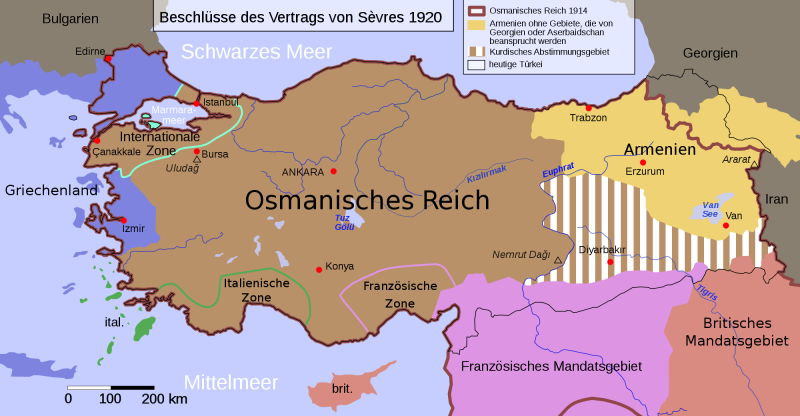
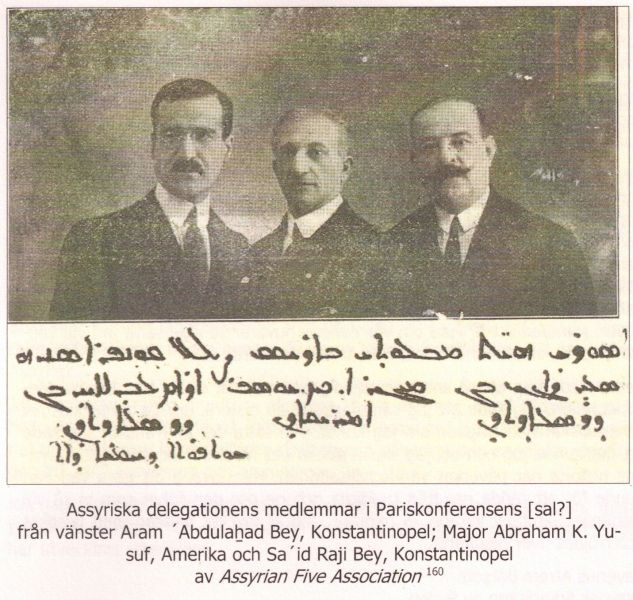
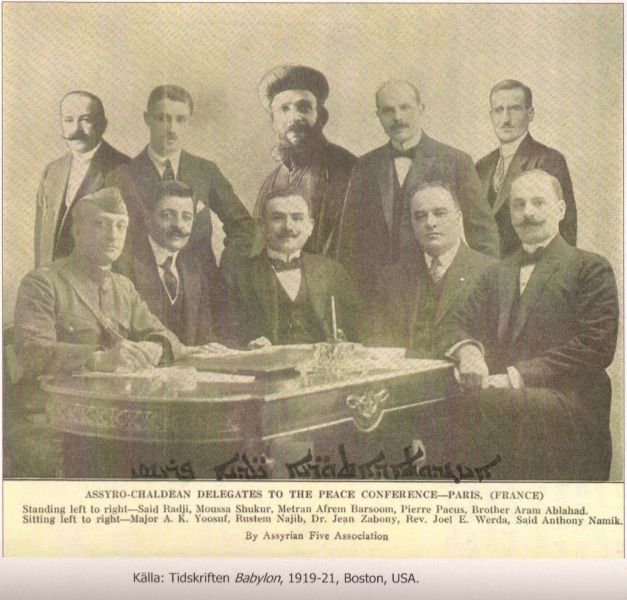
Sitting l.t.r.: Major Abraham. K. Yusuf, Rustem Najib, Dr. Jean Zabnoy, Pfr. Joel E. Werda, Said Anthony Namik
The Entente repeatedly stressed the need for Turkey's "punishment" for the genocide of Christians. Under pressure from the Allies, the Special War Tribunal was established on 8 March 1919 and many young Turks were sentenced to death, even in absentia. While the new government in Istanbul tried to come to terms with the past and to cooperate with the Allies, Kemal formed his national movement in Anatolia, which is considered the origin of the "new Turkey".
The peace negotiations in Paris from 18 January 1919 to 21 January 1920 revealed the realpolitik of the Entente powers. The disunity of the victorious powers brought the Mudros armistice, but no demobilization of the Turkish army. This was mainly due to the interests of the English, who in return received Mosul and Alexandrette from the Turks. The fate of the Christians under Turkish rule played no role in this. Even during the peace negotiations, further massacres of Christians were carried out to prevent the refugees from returning. Thus the returning Suryoye in the Hakkari Mountains were attacked again and finally expelled. Although England brought in a "free Armenia", it did not want to provide soldiers or capital for this. Instead, Armenia was to be placed under French or American protectorate to protect it against Turkey. U.S. President Woodrow Wilson followed his ideals and committed himself "from the bottom of his heart" to Christians and their protection. Failed, however, at the Congress, which rejected the necessary financing. Thus, according to Wilson's ideas, new boundaries were drawn. Armenia became a state in its own right and the Suryoye received a minority status under the administration of their former butchers, the Kurds. The bishop of Mosul Afrem Barsaum was also present at the negotiations with the Suryoye delegation. He wrote afterwards: "I could have negotiated in the same way with the walls. We were simply ignored and ignored." After signing the Treaty of Sèvres on August 10, 1920, Kemal ordered the attack on the young state of Armenia on September 23, 1920. In the course of this attack, the Protected Armenia was crushed and later divided between Turkey and Lenin's Russia. In the process thousands of Christians were massacred anew.
Greece was not satisfied with the Treaty of Sèvres and attacked Turkey in 1922 and lost this war (catastrophe of Asia Minor). In the subsequent Treaty of Lausanne, Turkey was able to revise to a large extent the provisions of the Treaty of Sèvres according to its own ideas. The result was that the Republic of Armenia and the self-administration of the Kurds were abolished. The Treaty of Lausanne contains an explicit protection of minorities in chapters 37-44.
Effects of the peace treaties of Sèvres and Lausanne until today
The conflict between Turkey and the Kurds comes from the fact that the Turks promised the Kurds the land of the indigenous Christians in return for the genocide and have never kept this promise. While the Kurds admit the genocide of the Suryoye and Armenians, the Turks still deny it. Every issue is fought with all means. Gladly for this the §301 "reduction of the Turkishness" is used. Turkey even goes so far as to rehabilitate the former convicted perpetrators and, for example, has named streets after them.
The recognition of the genocide is one of the EU's conditions for Turkey's accession to the EU. Turkey, in turn, argues that Germany should first recognize the genocide as genocide, since Germany has "aided and abetted" it.
Already during the genocide, the assets of the minorities were sold at ridiculous prices, mainly to Muslim refugees from the Balkan wars. Thus, for the first time in the history of the Ottomans, a "Turkish bourgeoisie" was able to form.
The protection of minorities in Turkey is regulated in the Lausanne Treaties §37-44. It is clearly spoken of "non-Muslims". However, since 1923, Turkey refers this protection of minorities exclusively to Greeks, Armenians and Jews, since the Suryoye allegedly renounced these rights when founding today's Turkey. But no paragraph of the Lausanne Treaty states that only Greeks, Armenians or Jews are considered minorities.
The result of this politically motivated attitude is that the Suryoye are denied the right to run their own schools or to attend schools of other minorities. It is also still forbidden to speak the millennium-old language, Aramaic.
When one considers the measures by which Turkey repeatedly scares away its minorities or forces them to abandon themselves, the refusal to protect minorities is just another piece of the puzzle.
- 1935 Law on the adaptation of names (goes back to Enver of 1916), according to which everyone and everything must have Turkish names: first and last names, villages, towns, squares and streets.
- 1942 Wealth tax (Varlık Vergisi) aimed to "turquoise" the economy, according to which non-Muslims had to pay 100 times the tax of a Muslim. Thousands left the country or were sent to the labour camp Aşkale.
- The situation of the Christians deteriorated dramatically and culminated in the pogrom of 6/7.09.1955 in Istanbul.
- Mass demonstrations against Christians in the 1960s in Tur Abdin due to the Cyprus conflict --> beginning of the Suryoye emigration wave
- As a result of the Kurdish conflict since the 1980s, the Suryoye were again caught between the wheels in their settlement areas. At night they were forced by the Kurds to raise money and weapons and during the day they were punished by the Turkish government for being forced to help the Kurds at night. So most of the Suryoye fled to the West. During this time countless Suryoye murder victims had to be lamented.
- In 2008, the Turkish government expropriated large parts of the land of the Mor Gabriel monastery under pretexts. Allegedly, the monastery, built in 397 A.D., was built on top of a mosque or no property tax was paid, the plots of land were woodland and forest belongs to the state, .... In reality, the Swedish parliament had acknowledged the genocide shortly before. With the tactic of 'suing' the Suryoye are being worn down and driven into financial ruin in order to leave the country.
Today's catastrophic situation of Suryoye in the Middle East
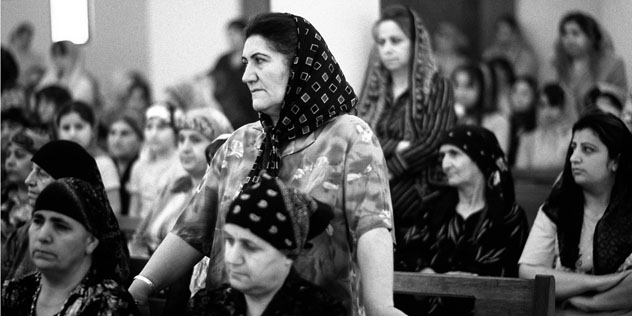
In these days an event of world historical importance is taking place. Christian towns and villages where medieval monasteries stood and where the Aramaic language had been spoken without interruption for thousands of years are currently being erased. The extent of this loss can hardly be assessed. Here, an ancient, long-established culture of the Near East is facing extinction, one that has shaped its region and the global history of Christianity and science. 100 years ago, a genocide was committed against the Christians of the Near East, which also claimed the Suryoye as victims. While the descendants of the survivors in their new homeland, in the Western world, are preparing the memory of this genocide, their compatriots in the Orient see their lives threatened because they are Christians and belong to a different ethnic group. This tragedy, or perhaps, with the current assessments of Amnesty International, one may already call it a crime, conjures up the danger of a new genocide these days. There can no longer be any doubt as to the tragic nature of the situation, given the latest reports. Since the year 2003 the number of Christians has decreased from 1.5 million to about 400,000 in 2015.
The situation has worsened catastrophically for the Suryoye in northern Iraq since the advance of the ISIS (Islamic State in Iraq and Syria) and is facing a new genocide. The ethnic expulsion and killing of the ancestral population from the Nineveh Plain, around Mosul, has been going on since June 10, 2014, in front of the world public. Even before the Iraqi elections, the remaining Suryoye had high hopes that the region north and east around Mosul would be able to recognise independent provincial status. This would enable self-government of the ethnic and religious minorities (Suryoye, Yezidi and Shabak), which would provide security and protection.
10.06.2014
On 10 June 2014 radical Islamists (ISIS) conquer the megacity Mosul (Nineveh plain). Shortly thereafter, large parts of the Nineveh plain fall under ISIS control. Their goal is to establish an Islamic state of God in large parts of Syria and Iraq. The International Organization for Migration (IOM) reports that over 500,000 people have fled their homes since the first fighting over Mosul. Residents leave their homes for fear of violent attacks. Christians from Mosul seek shelter in the Nineveh plain, which is inhabited by a majority Christian population. Here, in turn, more than 2,000 families have fled to places such as Nohadra (Dohuk) and Erbil.
14/16.07.2014
All Christian houses in Mosul are marked with the Arabic letter Nن, which stands for "Nasrani, Christians". A decree is distributed by ISIS in Mosul that provides four options for Christians: convert to Islam, a "djizya" (tax for non-Muslims), leave the country or die by the "sword". The Christians chose to flee to the north of Iraq.
23.02.2015
The newly founded state of Iraq razed the area around the village of Simele to the ground on 7 August 1933 and murdered over 10,000 Suryoye who had fled the Hakkari region. The survivors fled to the depopulated Khabour River, where they fell victim to ISIS on 23.02.2015 and more than 300 Suryoye were kidnapped. In February 2015, the ancient cities of the Assyrians and Arameans, Nimrud and Hatra will be destroyed.
Because of the killing by the sword, the Suryoye call the genocide of 1915 "Sayfo" = sword. Just as the Holocaust against the Jews was recognized and dealt with, the genocide against the Suryoye and Armenians must be recognized in the West and in Turkey. Also, a separate autonomous protection zone in Syria/Iraq is necessary for the Suryoye to survive. So that the Suryoye can finally heal their wounds of the past and present.
Source data from which all information has been taken
| Name | Author | Publisher | ISBN |
| Beihilfe zum Völkermord, Deutschlands Rolle bei der Vernichtung der Armenier | Jürgen Gottschlich | Ch. Links Verlage | 978-3-86153-817-2 |
| Ein Zeichen der Gerechtigkeit für die vergessenen Opfer von 1915, Für eine Anerkennung des Völkermordes an den Armeniern | Gesellschaft für be-drohte Völker | ||
| Völkermord an den Armeniern: Erstmals mit Dokumenten aus dem päpstlichen Geheimarchiv über das größe Verbrechen des Ersten Weltkriegs | Michael Hesemann | Langen Mueller Herbig | 978-3-77668213-7 |
| The thrity-year genocide, Turkey's destruction of its christian minorities 1894-1924 | Benny Morris and Dror Ze'evi | Harvard | 978-0-674916-45-6 |
| Shemun Hanne Haydo, Ein Volksheld der Suryoye | Kemal Yalcin | 978-3-947812-01-1 | |
| Seyfo - Das Jahr des Schwerts, Band 1-3 | Kemal Yalcin | 978-3-947812-06-6 | |
| Gunhe d-Tur Abdin | Dekan Sleman d-Beth Henno | ||
| Der Völkermord an den Armeniern 1915/16 | Wolfgang Gust | zu Klampen! | 3-934920-59-4 |
| GEO EPOCHE, Deutschland um 1900 | GEO | ||
| Frühes Christentum zwischen Euphart und Jangste | Christoph Baumer | Urachhaus | 3-8251-7450-6 |
| Ohne Recht keine Zukunft | Horst Oberkampf | Erlanger Verlag für Mission und Öku-mene | 978-3-87214-528-4 |
| Geschichte der syrischen Wissenschaften und Literatur | Mor Ignatios Aphrem I. Barsaum | Harrassowitz | 978-3-447-06837-6 |
| Es war einmal… in Aradin | Heidy Margrit Müller, Kamal Y. Odisho Kolo | kitab | 978-3-902585-60-8 |
| Die Apostolische Kirche des Ostens | Wilhelm Baum, Diet-mar W. Winkler | kitab | 3-902005-x |
| Die Türkei und ihre christlichen Minderheiten | Wilhelm Baum | kitab | 3-902005-56-4 |
| Die christlichen Minderheiten der Türkei in den Pariser Friedensverhandlungen (1919-1923) | Wilhelm Baum | kitab | 978-3-902005-97-7 |
| Die Austreibung des armenischen Volkes in die Wüste | Armin T. Wegner | Wallstein Verlag | 978-3-89244-800-6 |
| Suryoye, Geschichte, Religion und Kultur | A. Emanuel Aydin | Edition Nuhro | |
| Syrer, die unbekannten orientalischen Christen | Andreas Heinz | Bar Hebräus Verlag | 90-5047-020-3 |
| Verfolgung, Vertreibung und Vernichtung der Christen im Osmanischen Reich 1912-1922 | Tessa Hofmann | LIT Verlag Münster | 3-8258-7823-6 |
| Vergossens Blut | Malfono Abed Mshiho Na'man Qarabsh | Bar Hebräus Verlag | |
| Syrische Kirchenväter | Wassilios Klein | Kohlhammer Urban | 3-17-01449-9 |
| Ein vergessener Holocaust, Die Vernichtung der christlichen Assyrer in der Türkei | Gabriele Yonan | progrom | 3-922197-25-6 |
| Der verleugnete Völkermord an den Armeniern 1915-1918 | progrom | ||
| Operation Nemesis | Rolf Hosfeld | Kiepenhauer & Witsch | 978-3-462-03468-4 |
| Die syrisch-orthodoxe Kirche von Antiochien | Diakon Hanna Aydin | Kiepenhauer & Witsch | 978-3-462-03468-4 |
| Schirin, Christin - Königin - Liebesmythos | Wilhelm Baum | kitab | 3-902005-14-9 |
Internet links
| http://sayfosyriacgenocide.org | |
| http://de.wikipedia.org | Mix der Suchbegriffe: Suryoye, Suryoyo, Messoptamien, Aramäer, Assyrer, Aramean, Assyrian, Chaldäer, Chaldian, Armenier, Jüngtürken, Abdülhamid, Osmanisches Reich, Völkermord, Demozid, Massaker, Pontusgriechen, Mesopotamien, Armin T. Wegener, Friedensverträge, Sevre, Lausanne, Pariser Friedensverträge, Türkisierung geographischer Namen, Pariser Friedenskonferenz 1919, 14-Punkte-Programm, Vertrag von Lausanne, Vertrag von Sèvres |
| https://www.planet-schule.de/wissenspool/menschenlandschaften/inhalt/hintergrund/voelkermord-an-den-armenien.html | |
| http://honorarkonsulat-armenien.de/voelkermord.htm | |
| http://www.enfal.de/grund44.htm | |
| http://www.nordirak-turabdin.info/cms/index.php?option=com_content&task=view&id=30&Itemid=147 | |
Calculation of the loss on the value of 2015 in Euro €
| Conversion rate: Franc:Euro " 6.56:1 interest: 5% per year maturity: 100 years |

